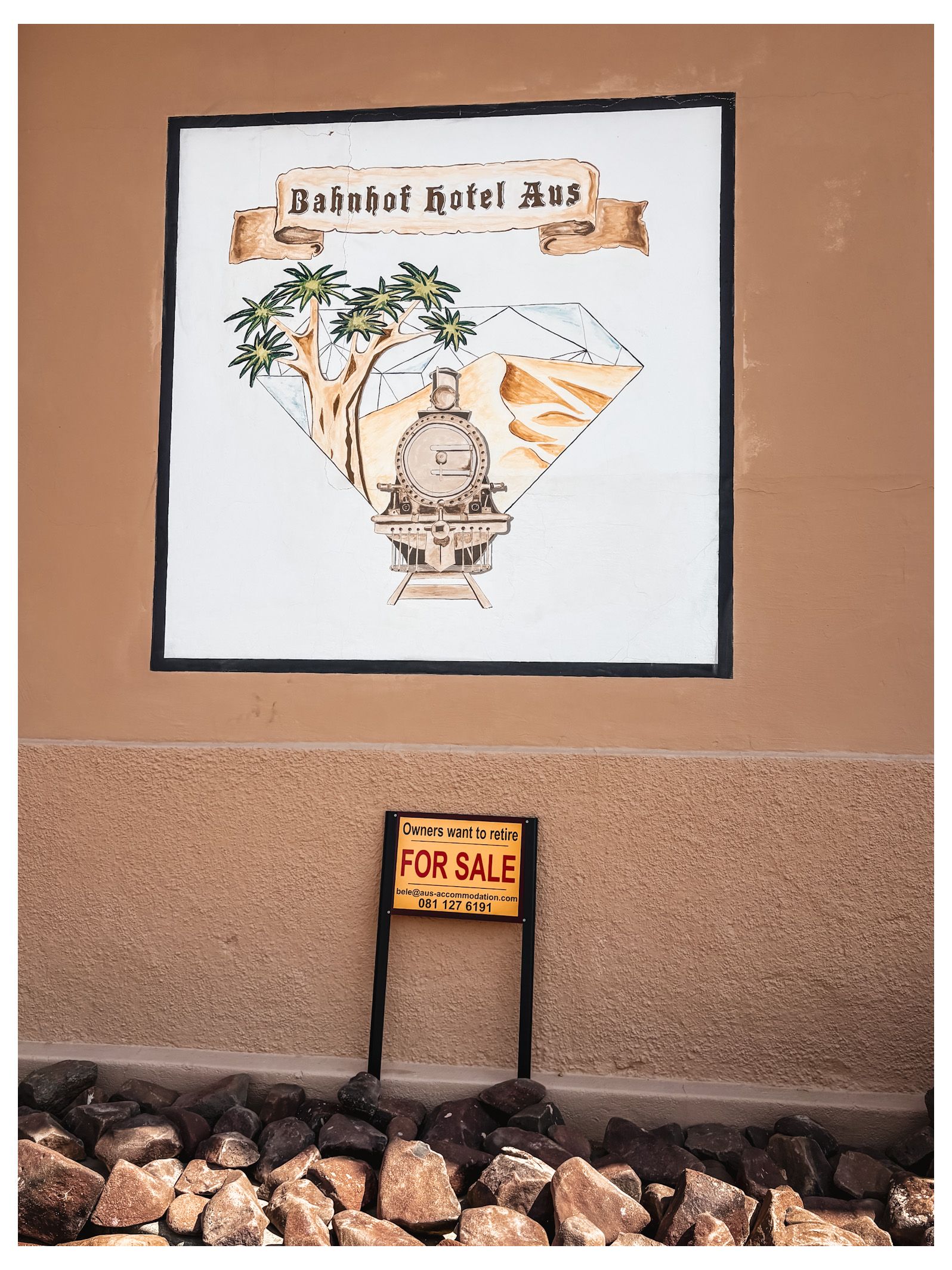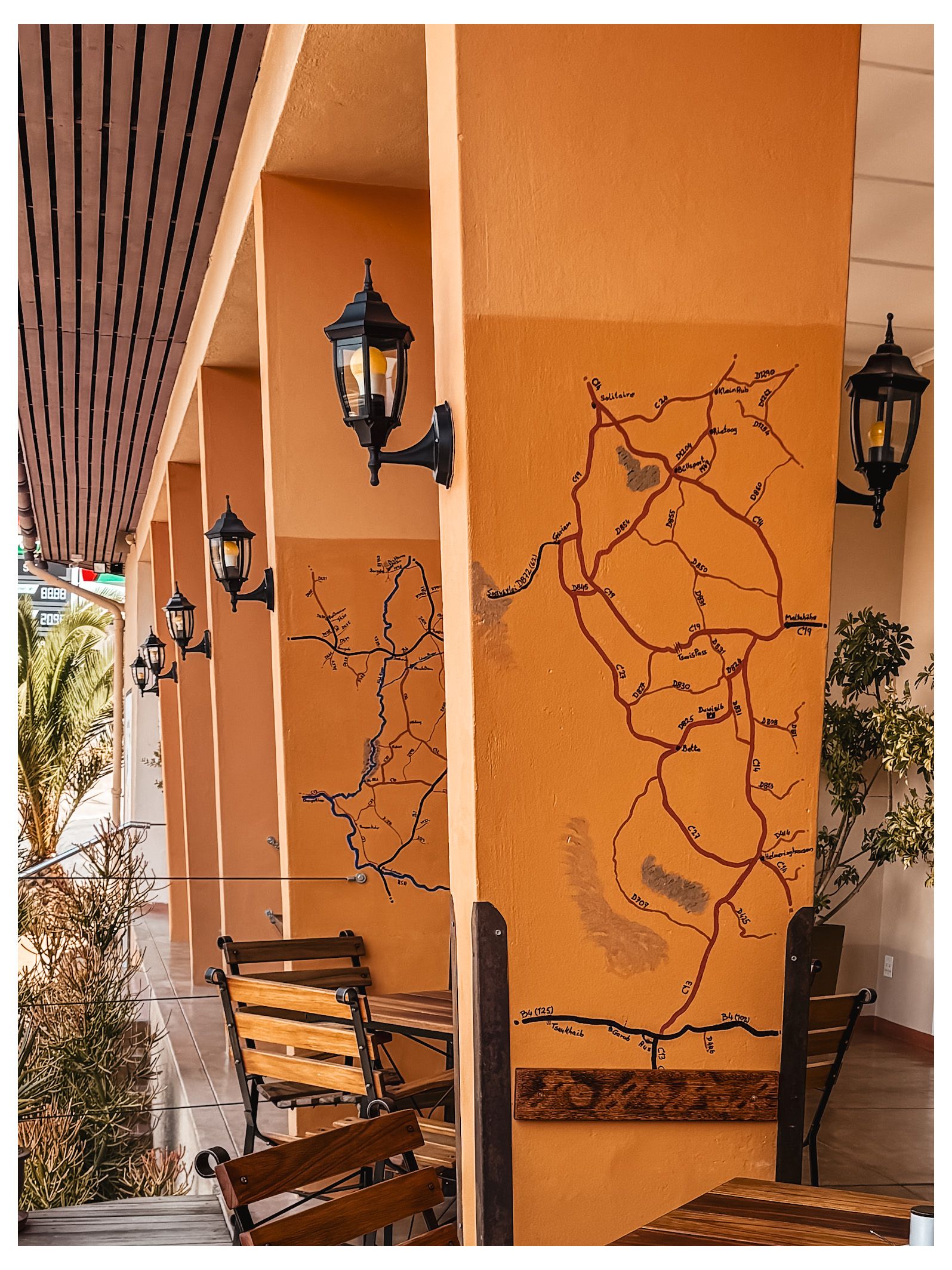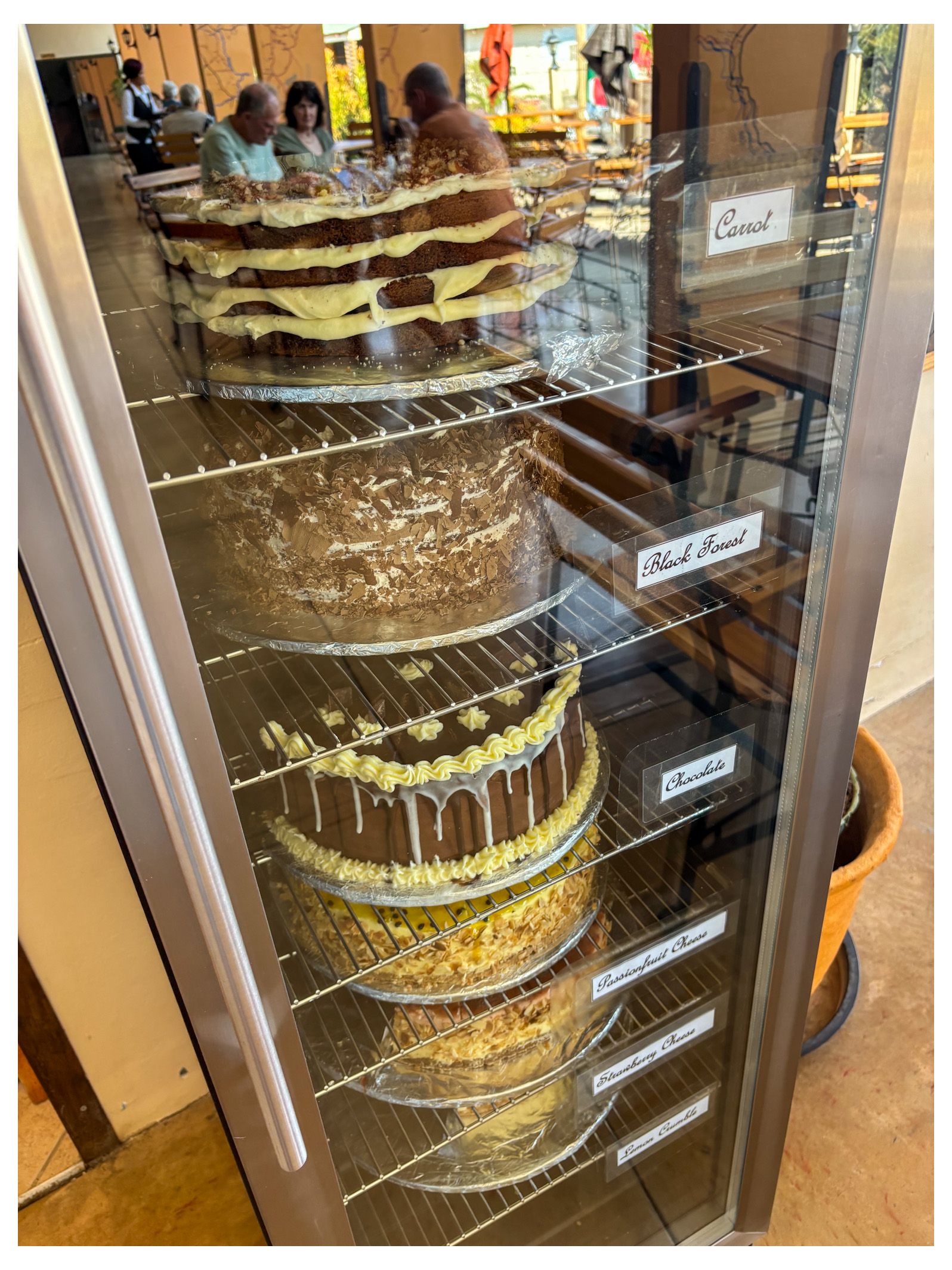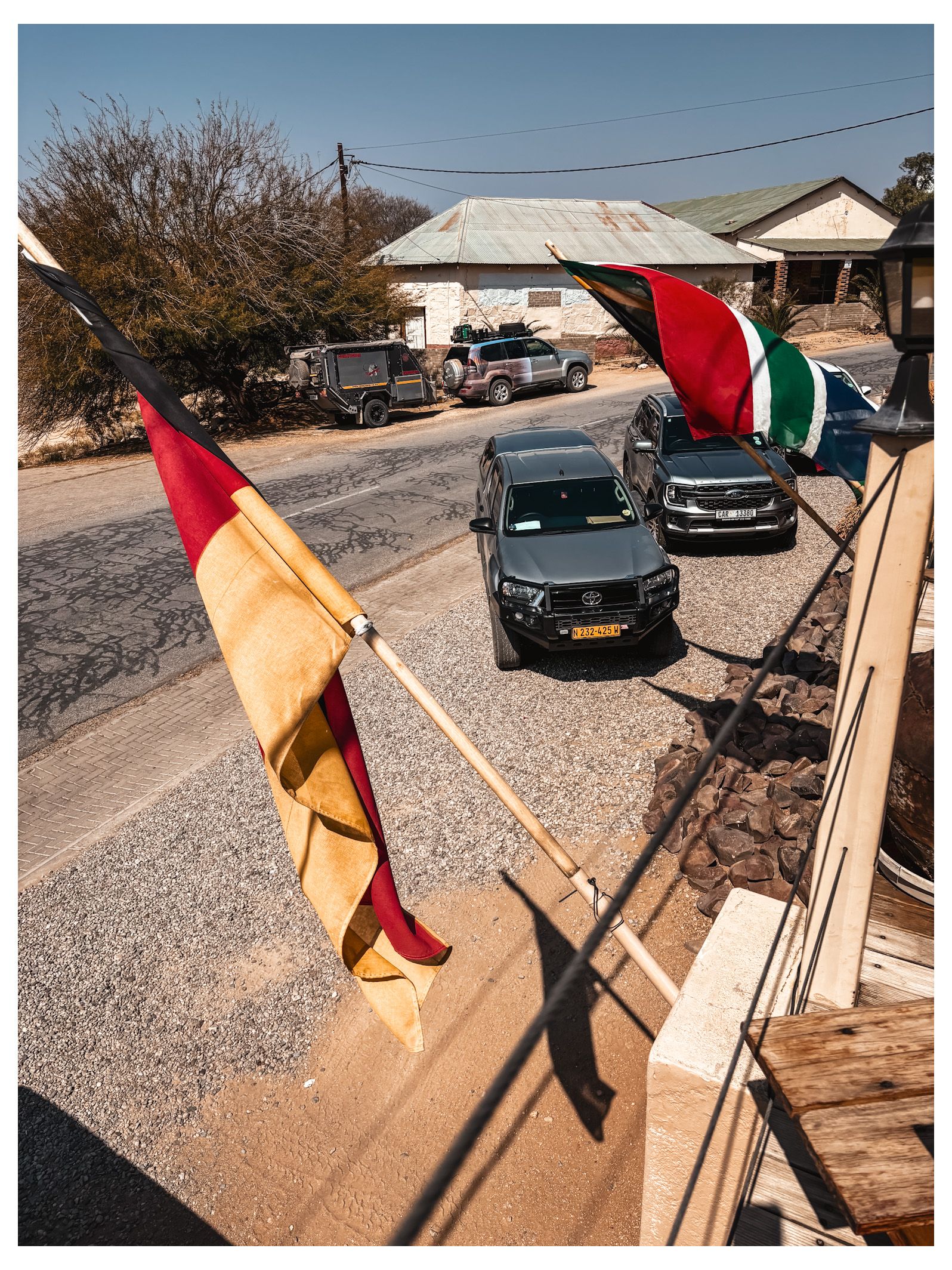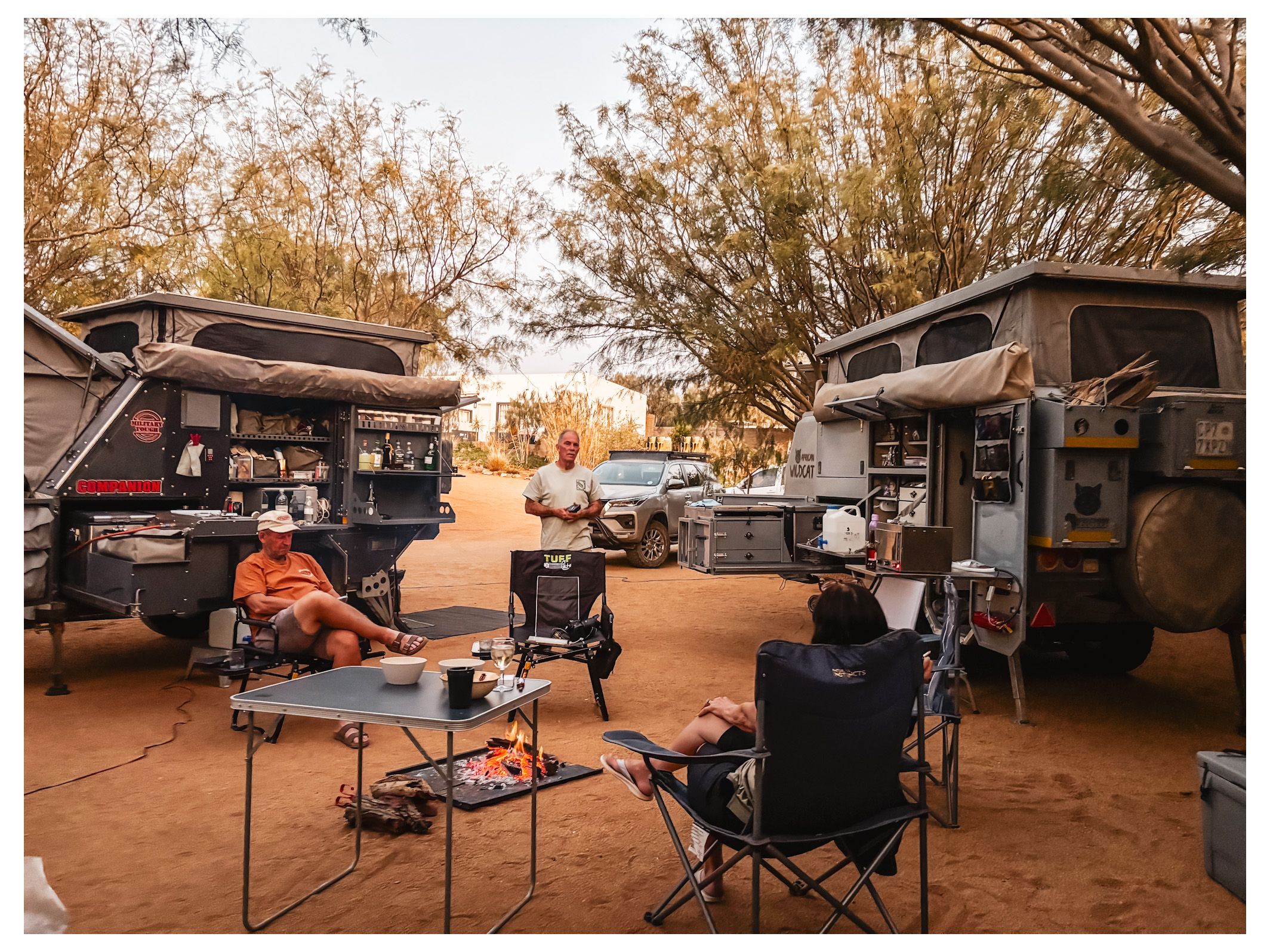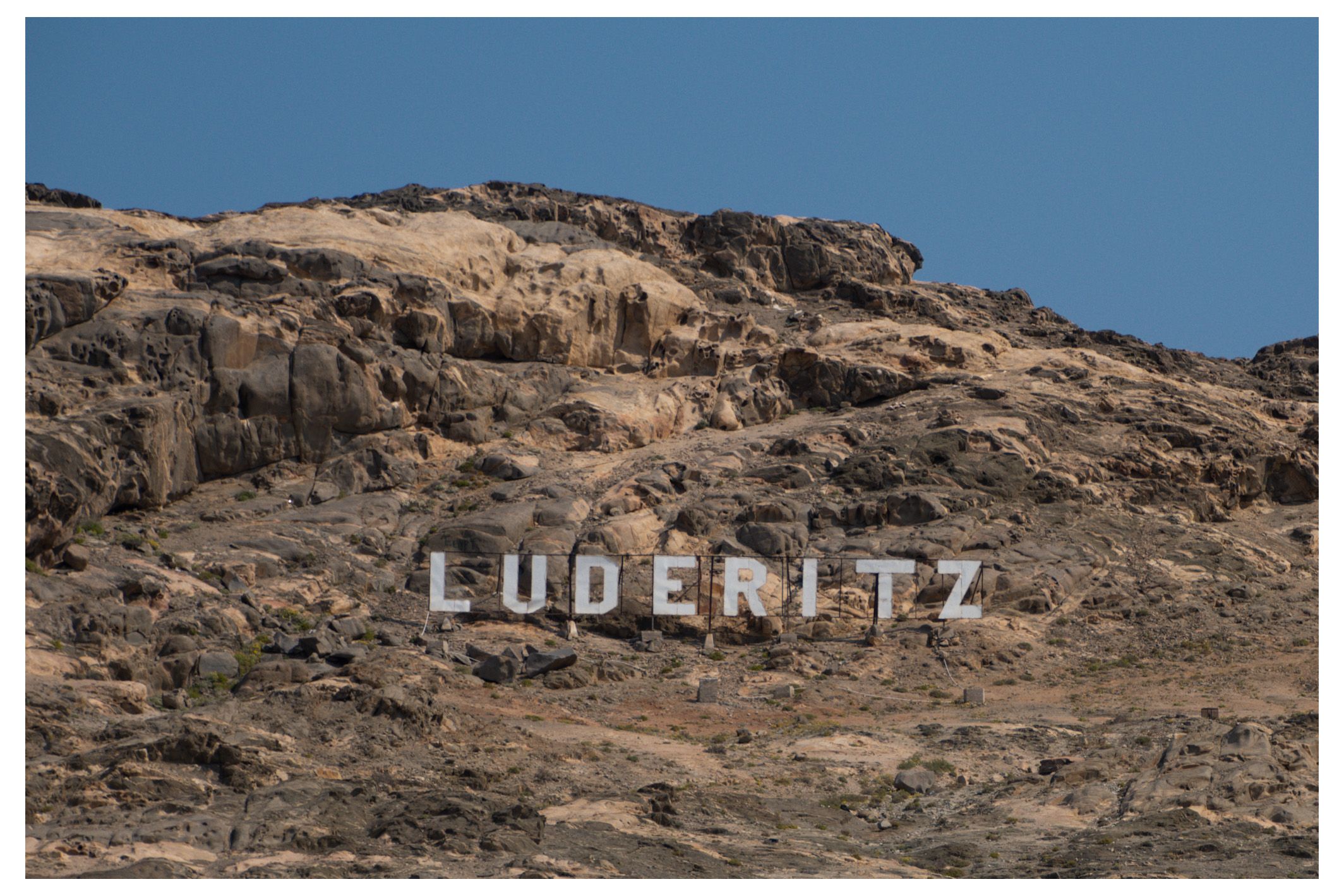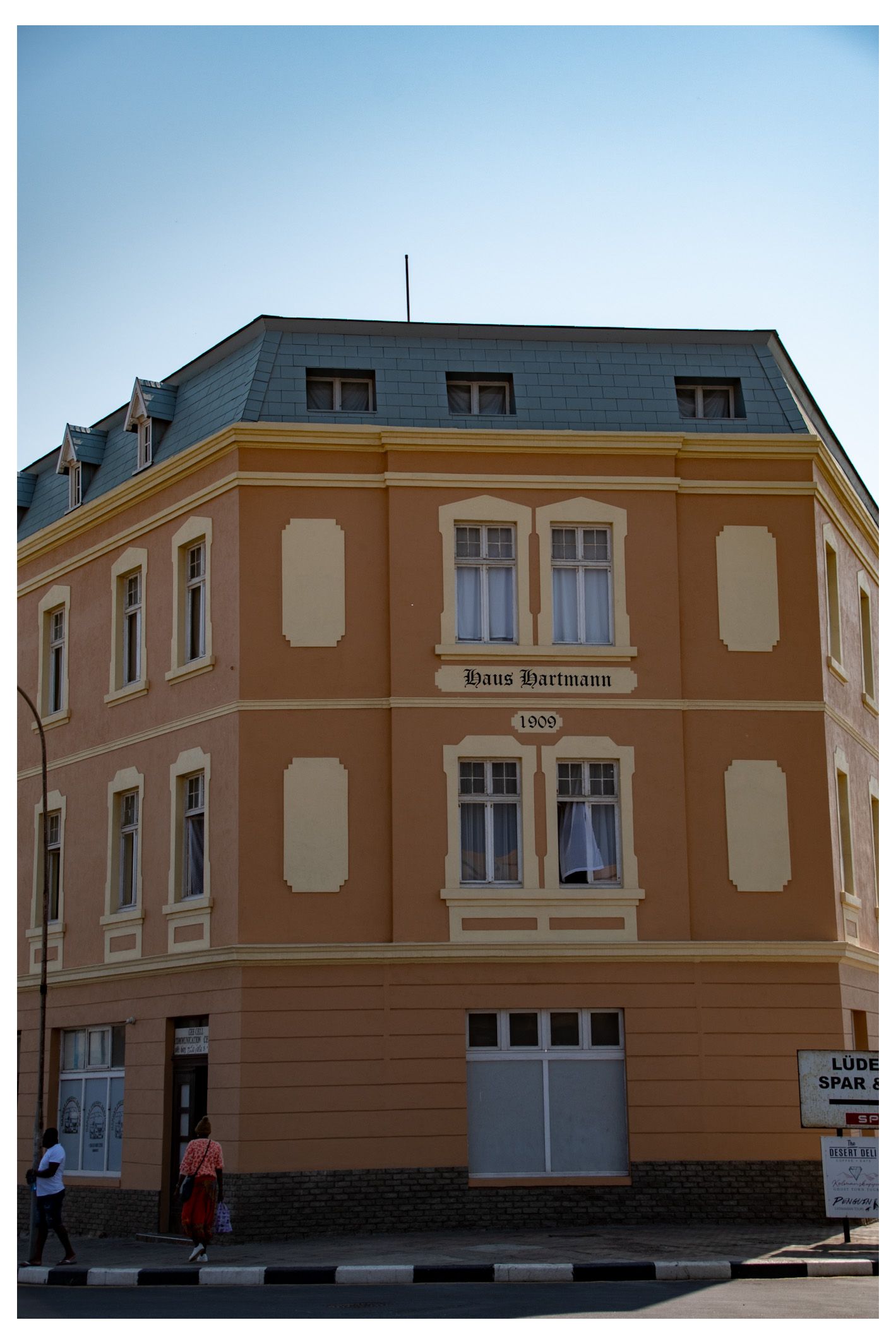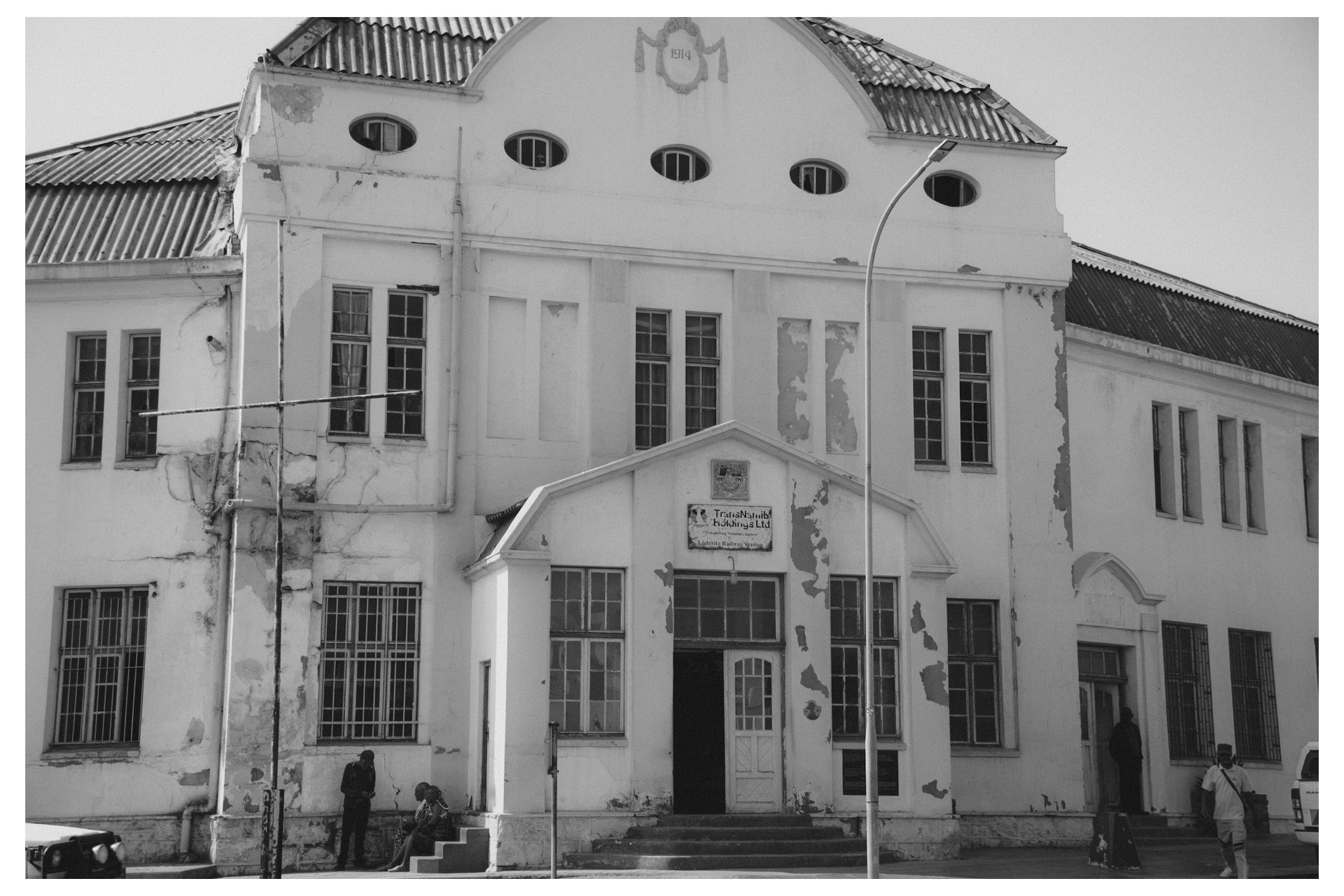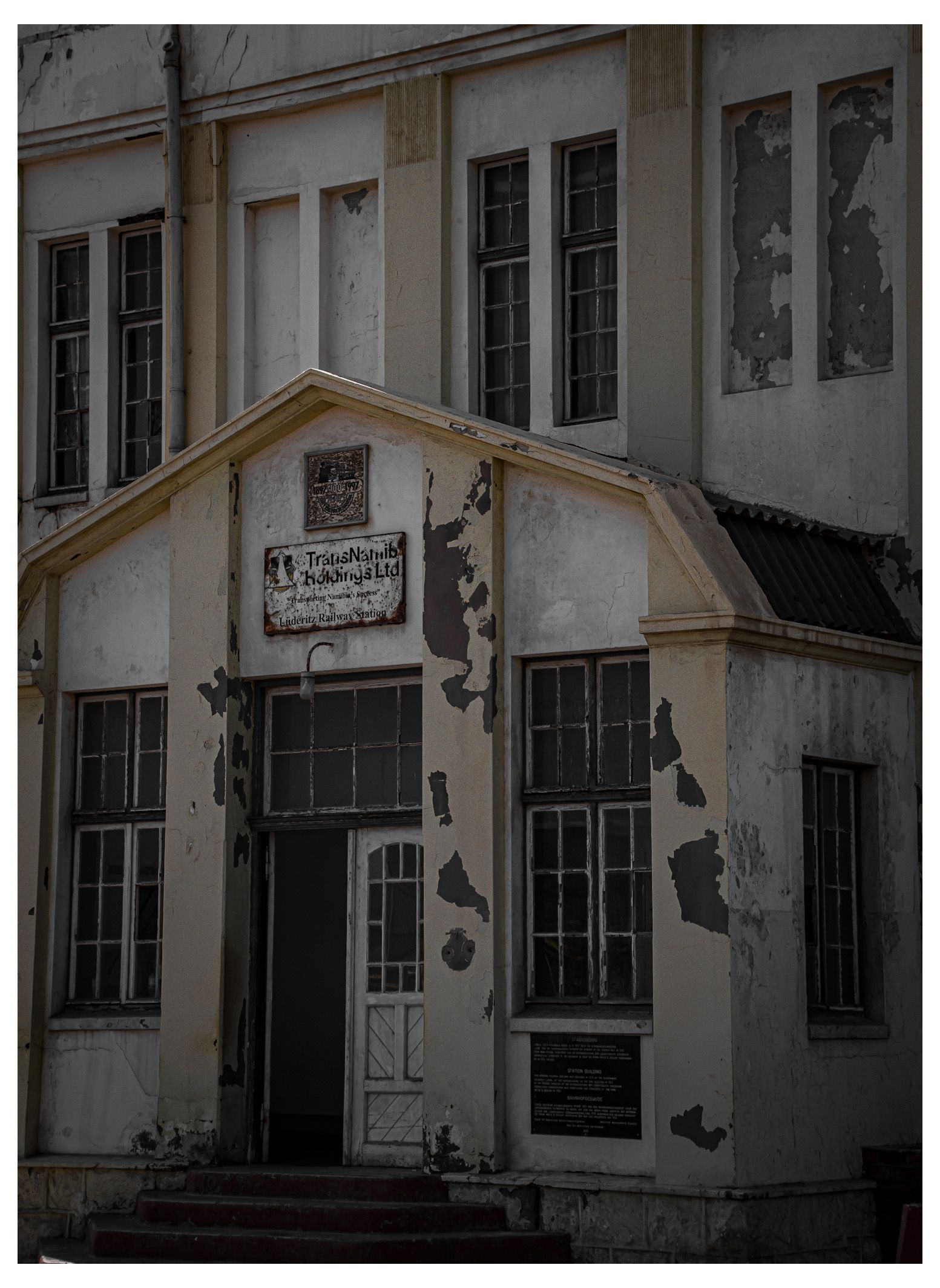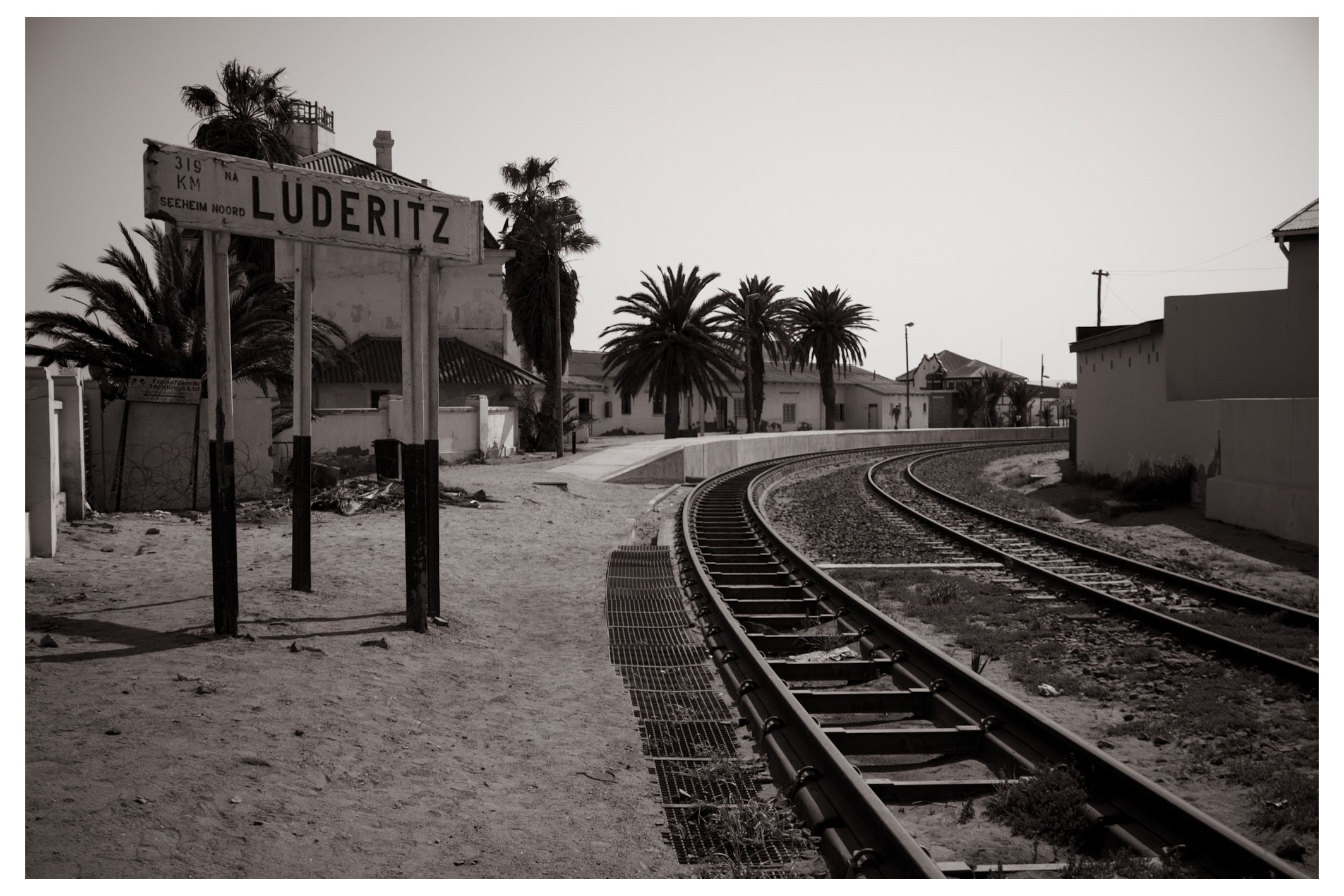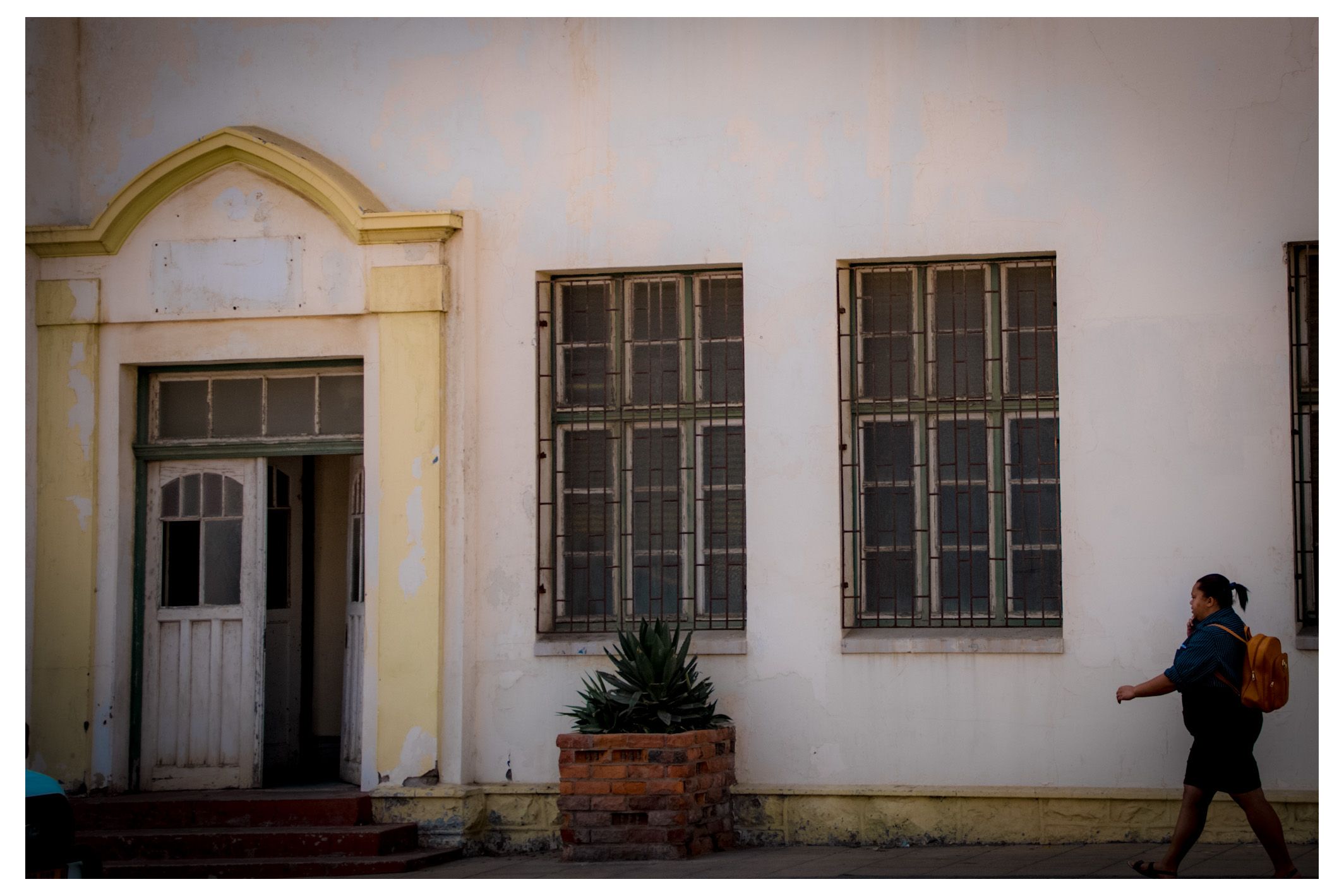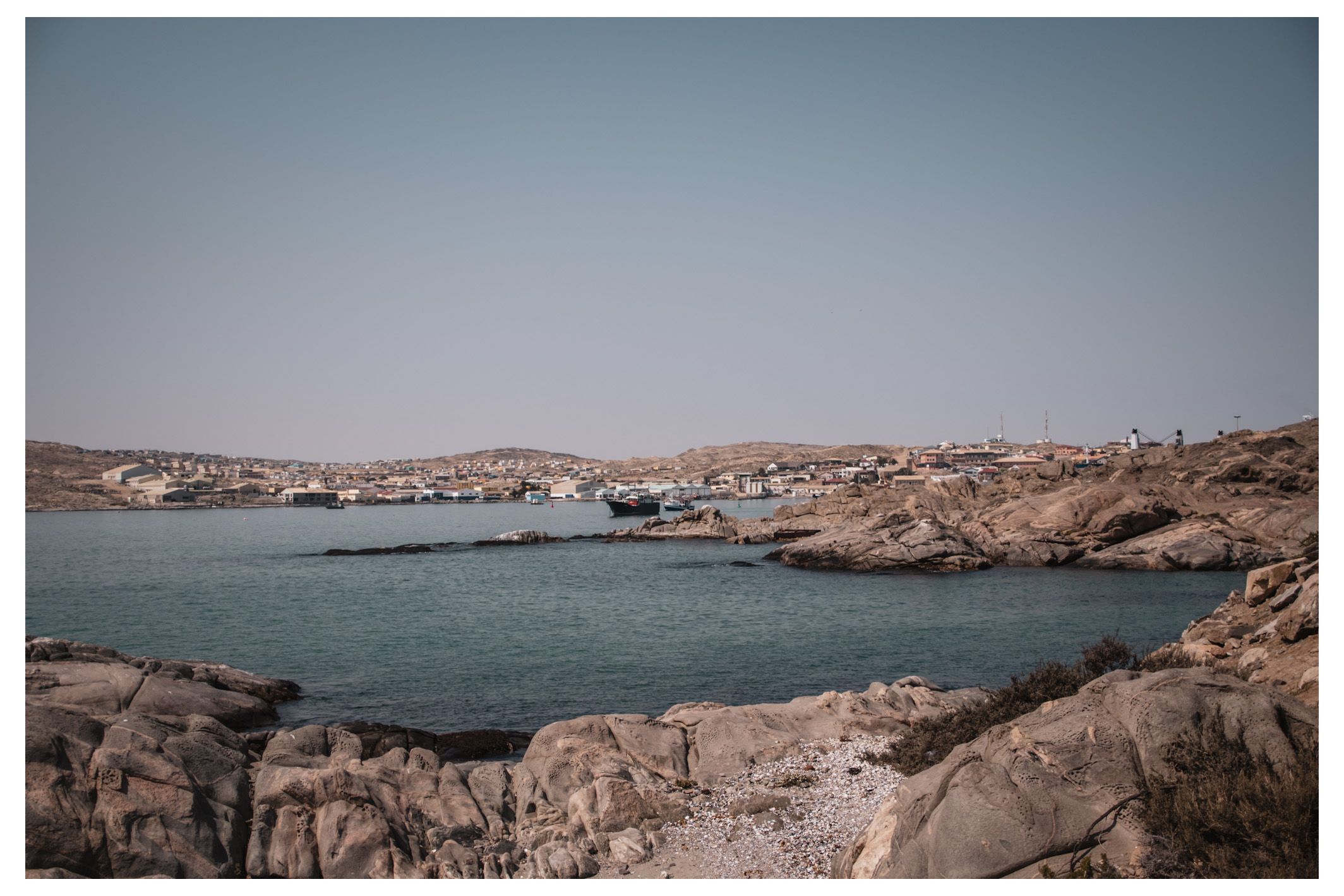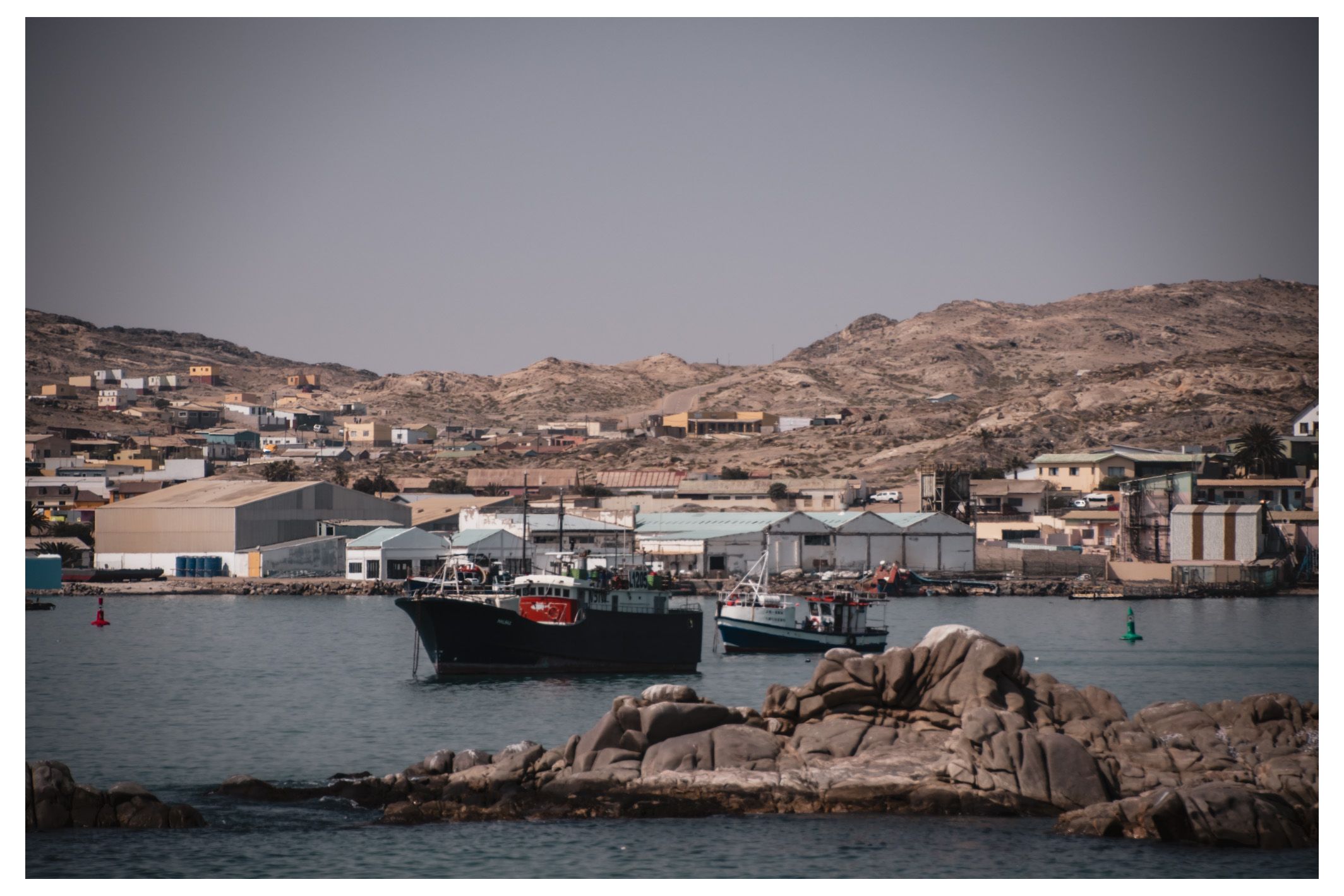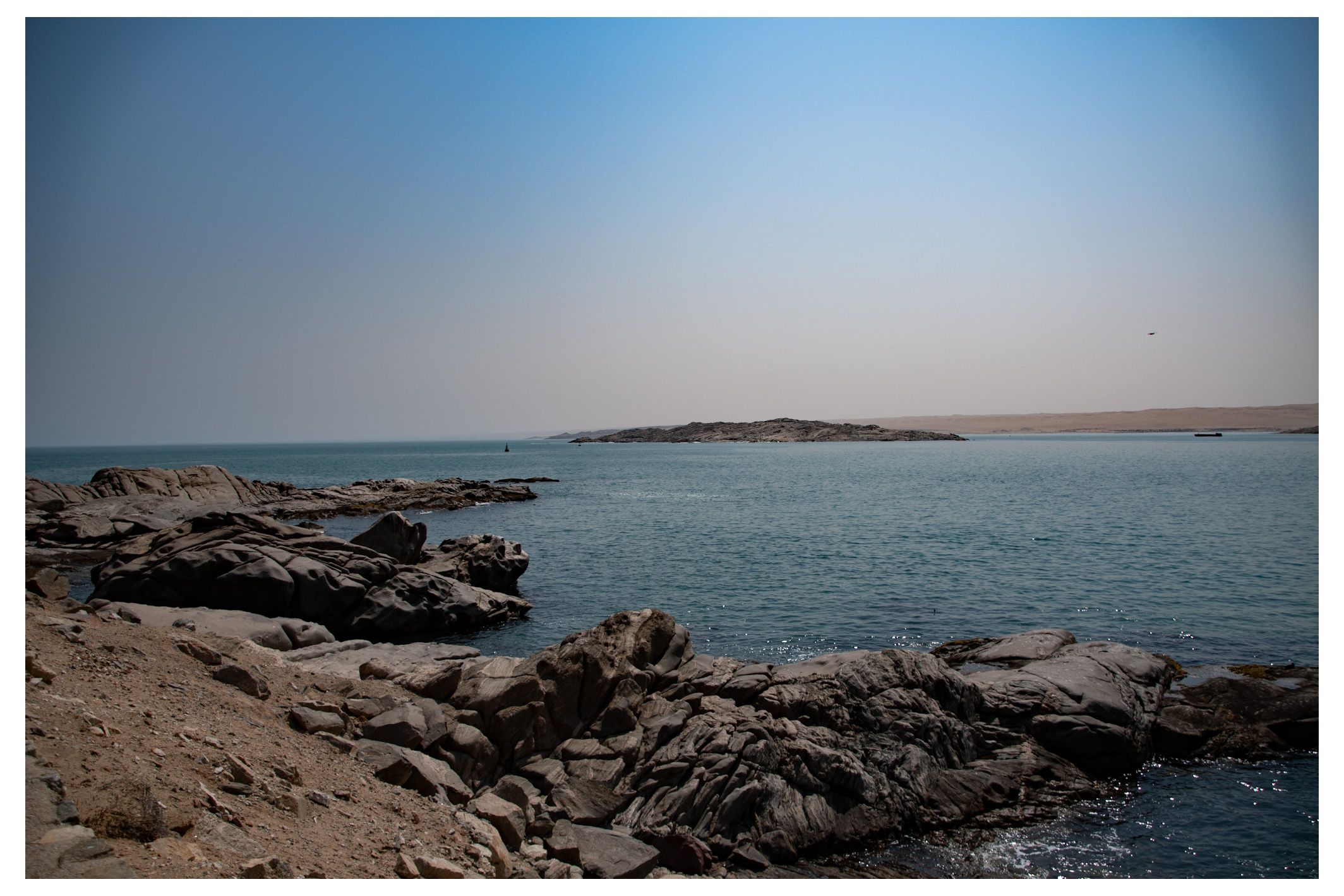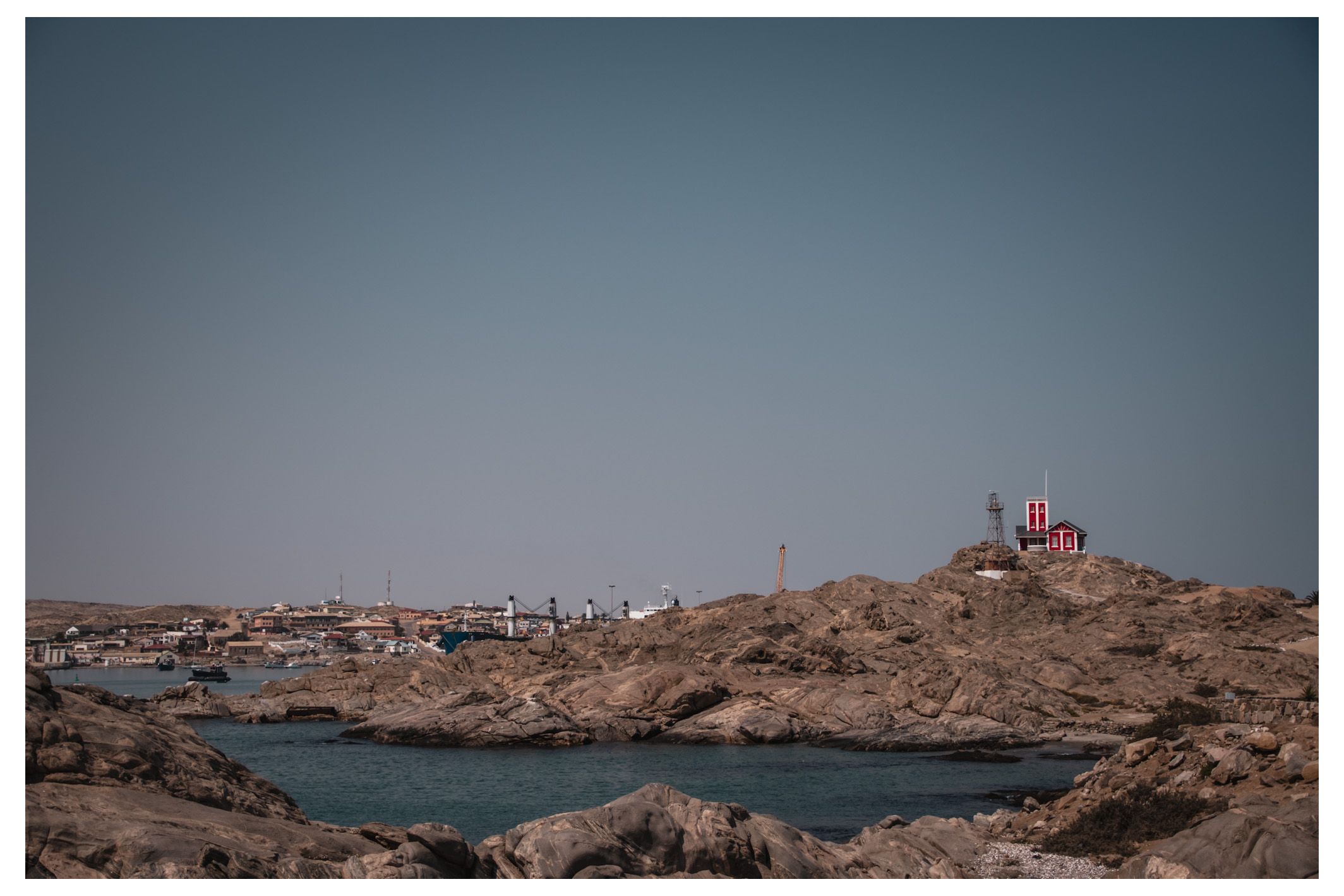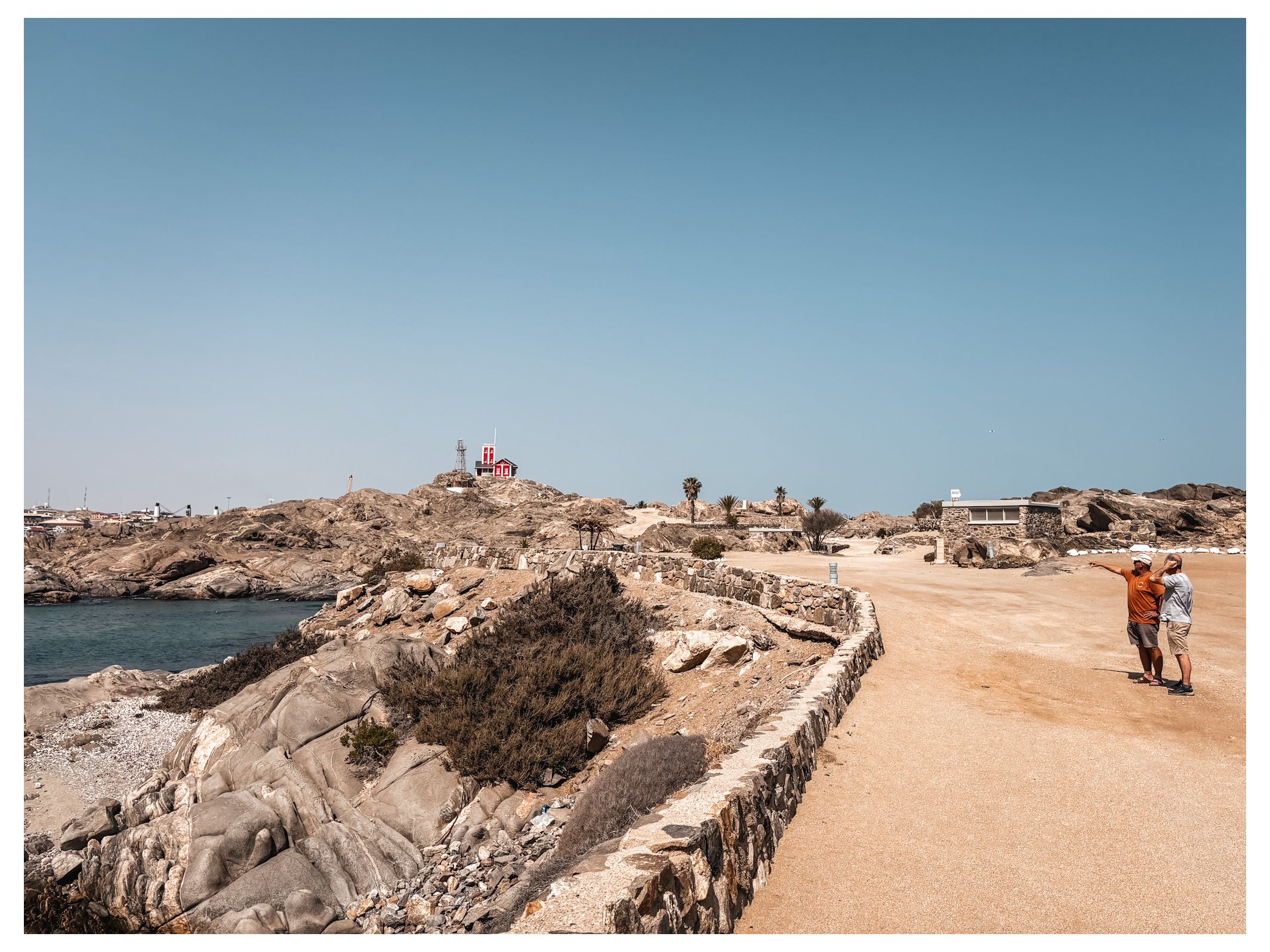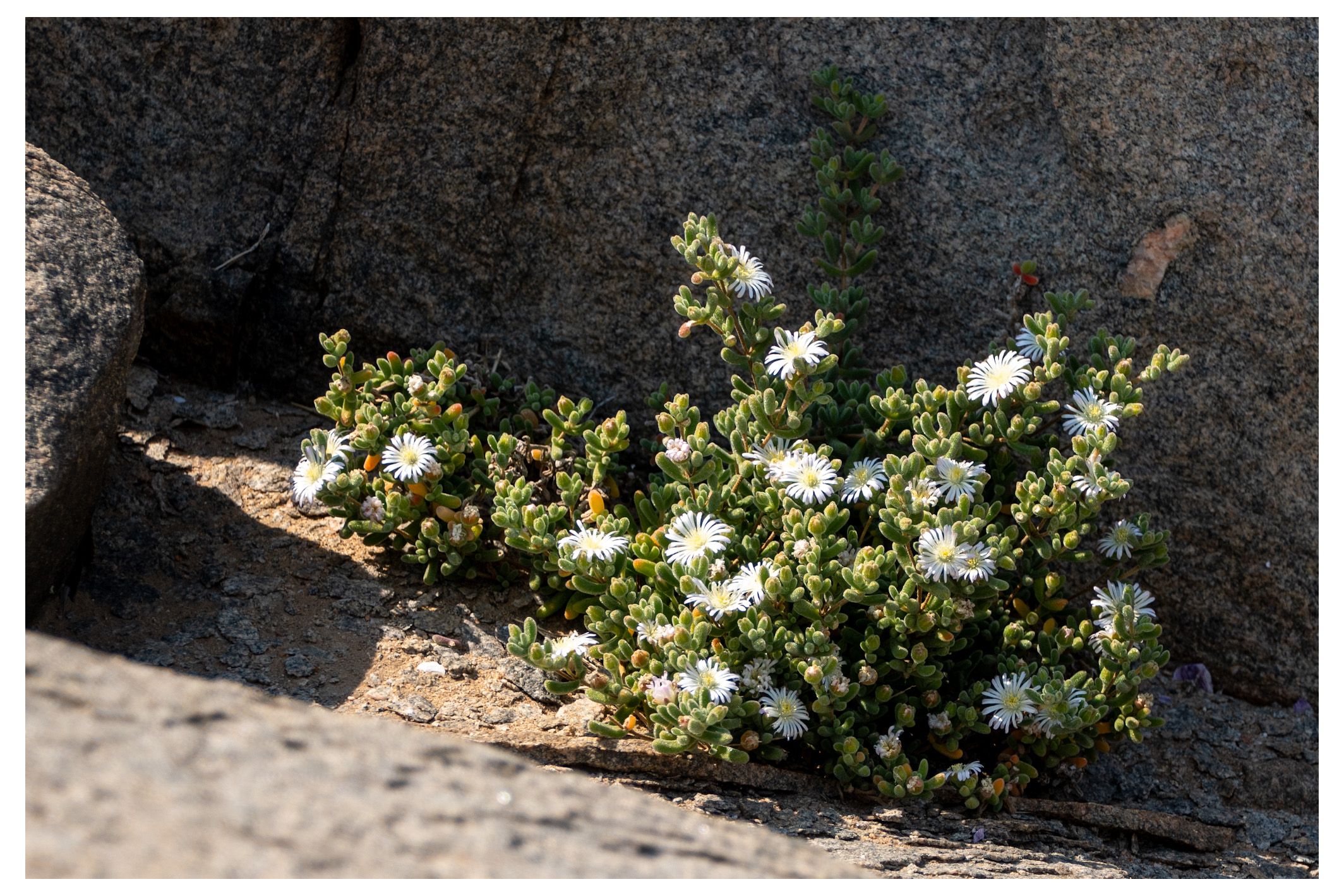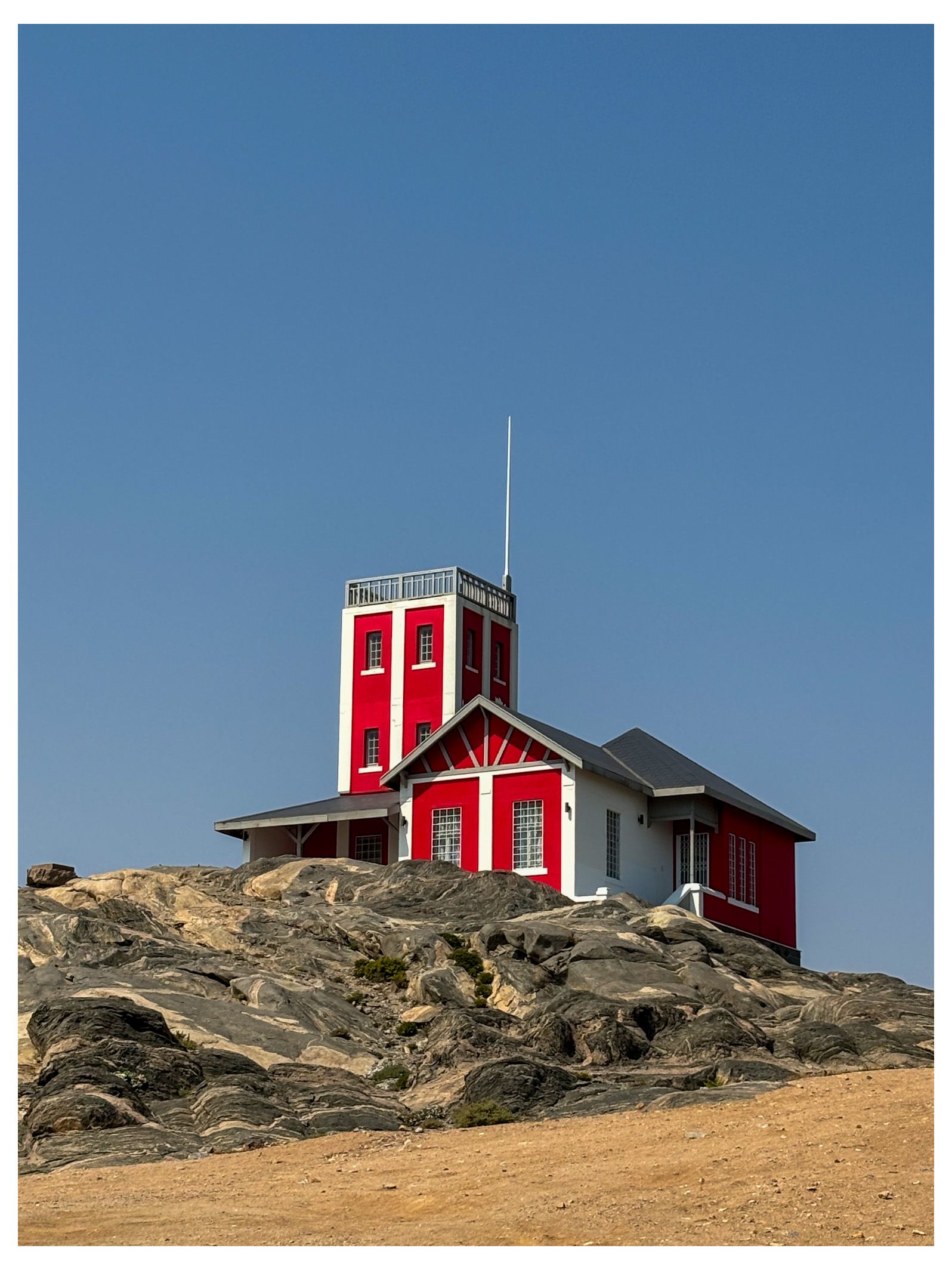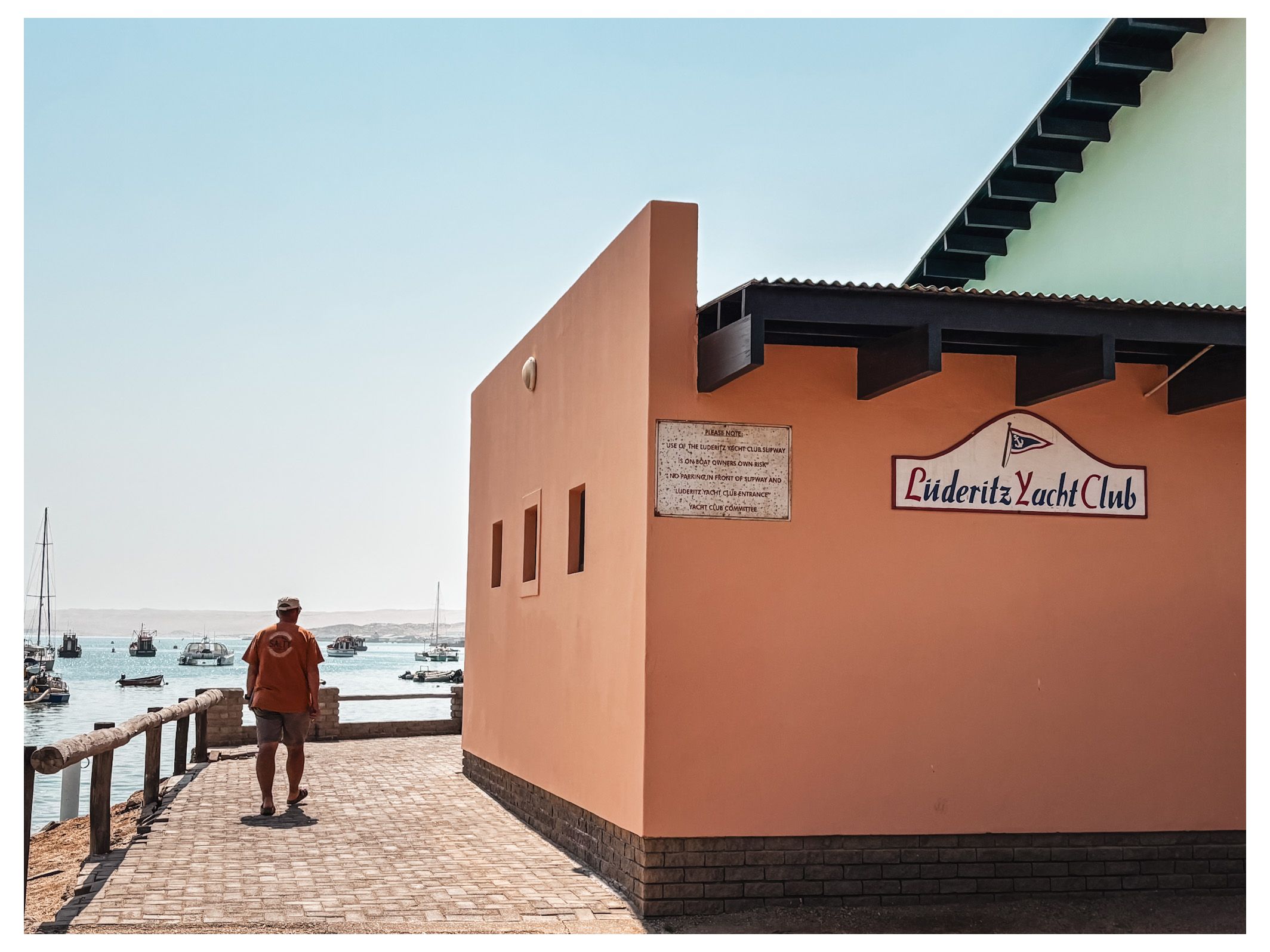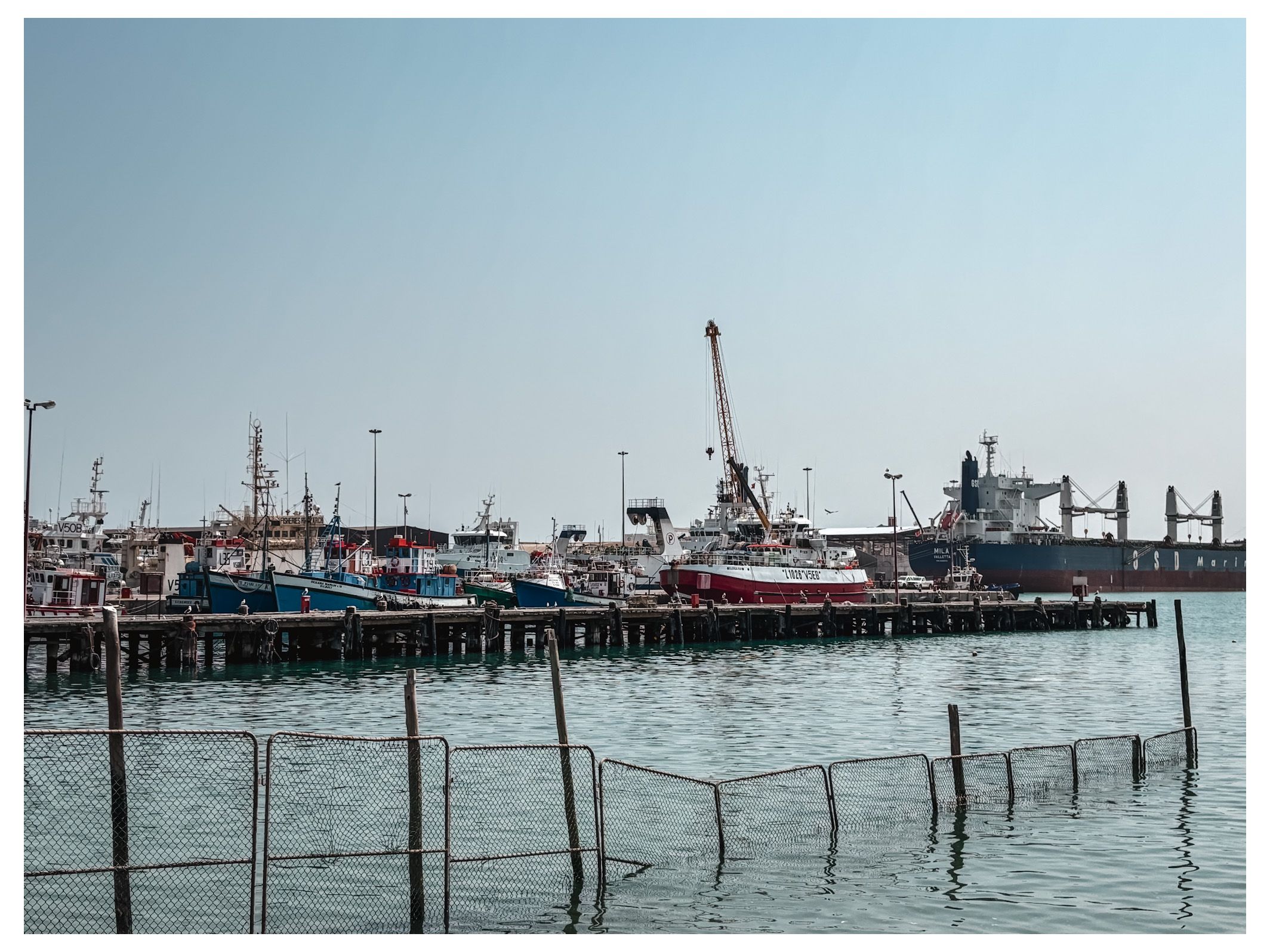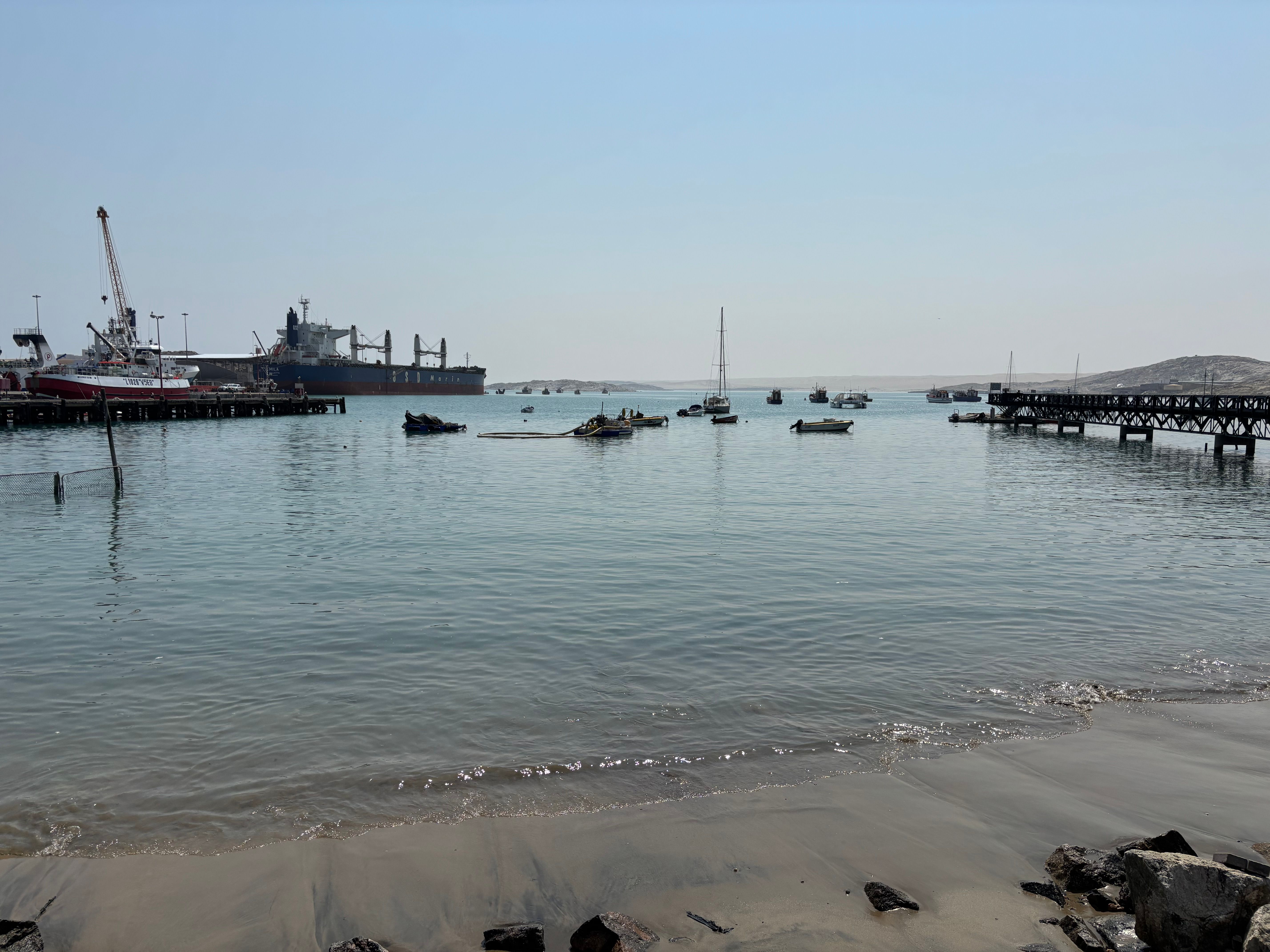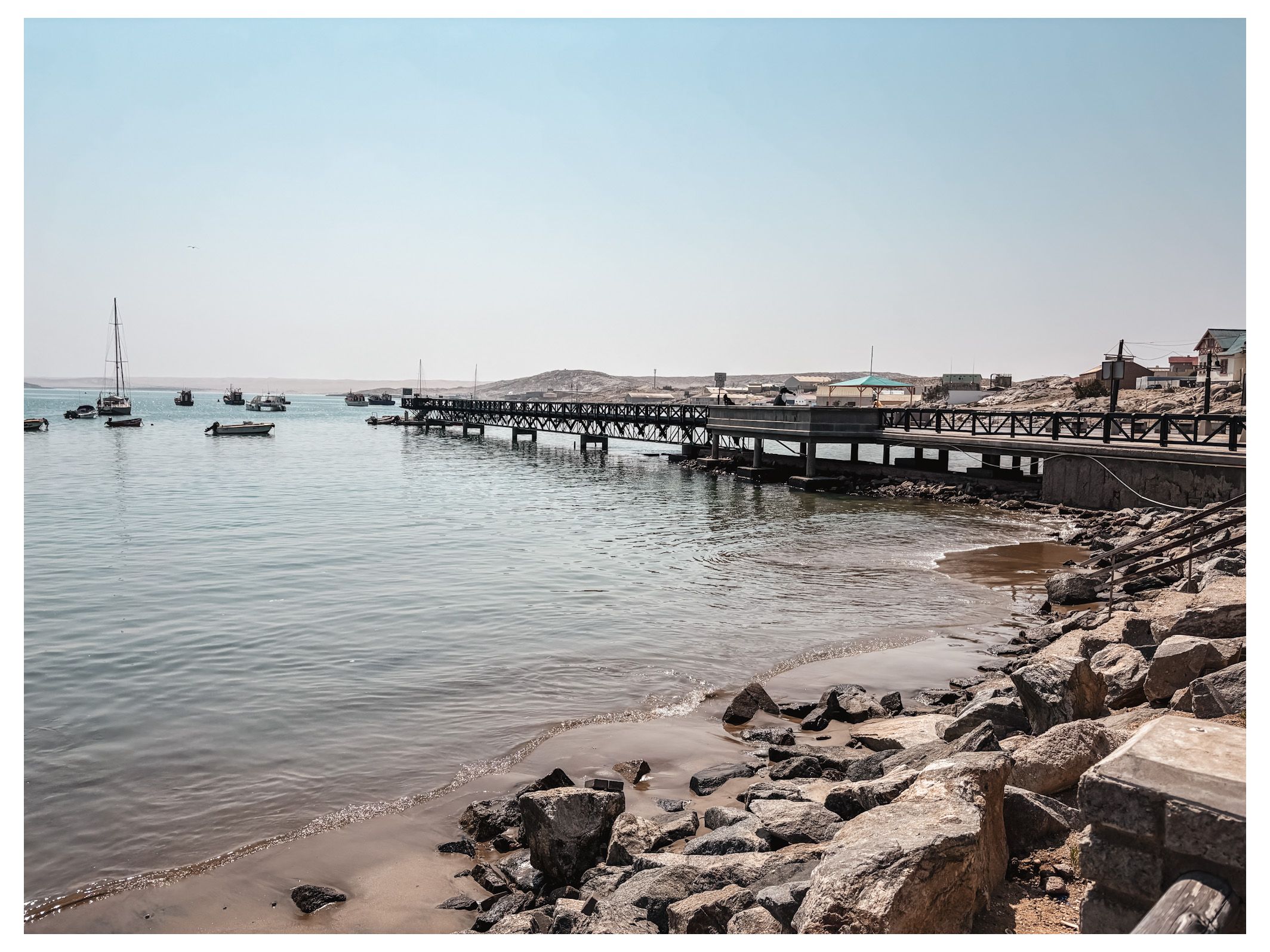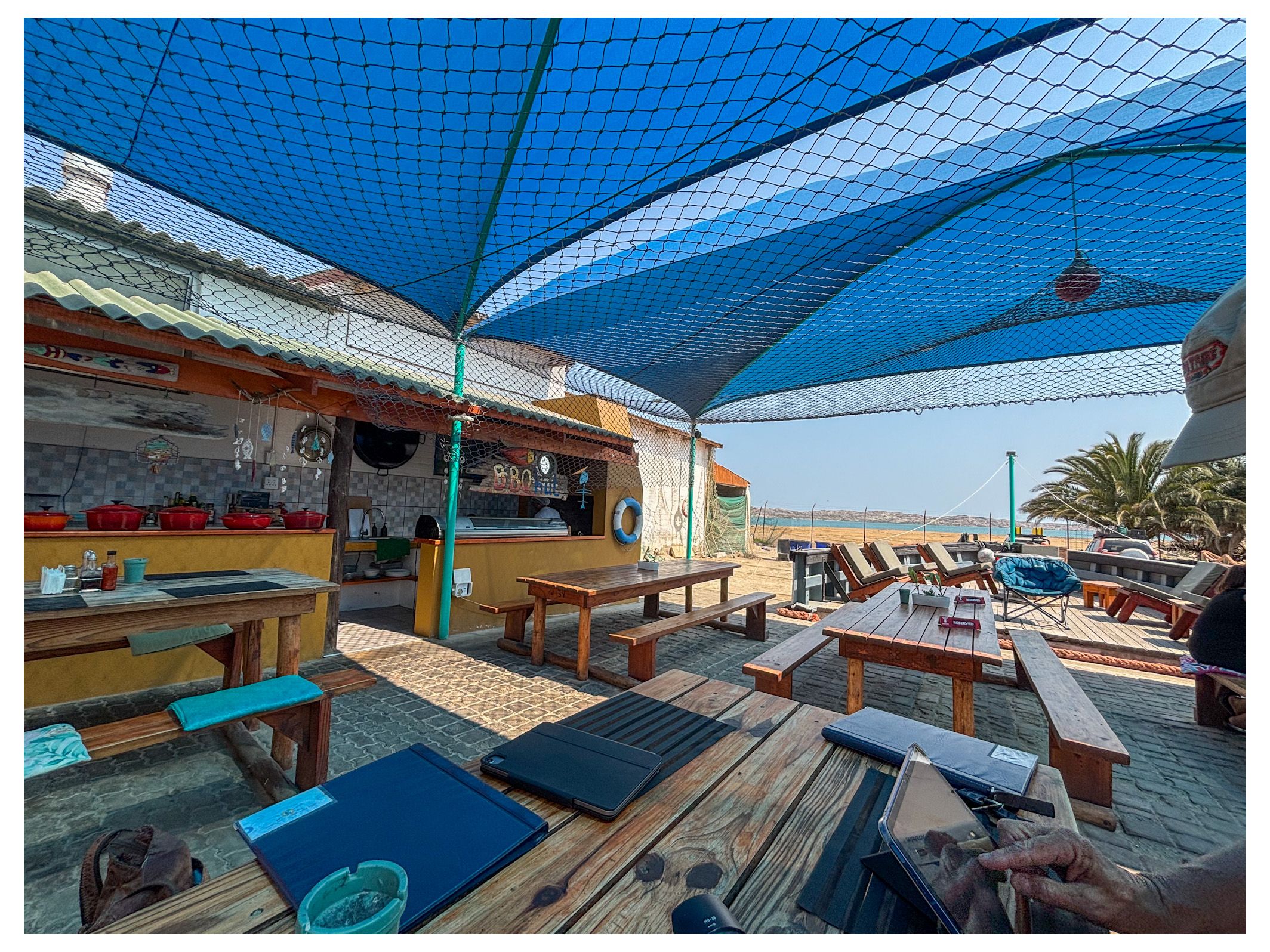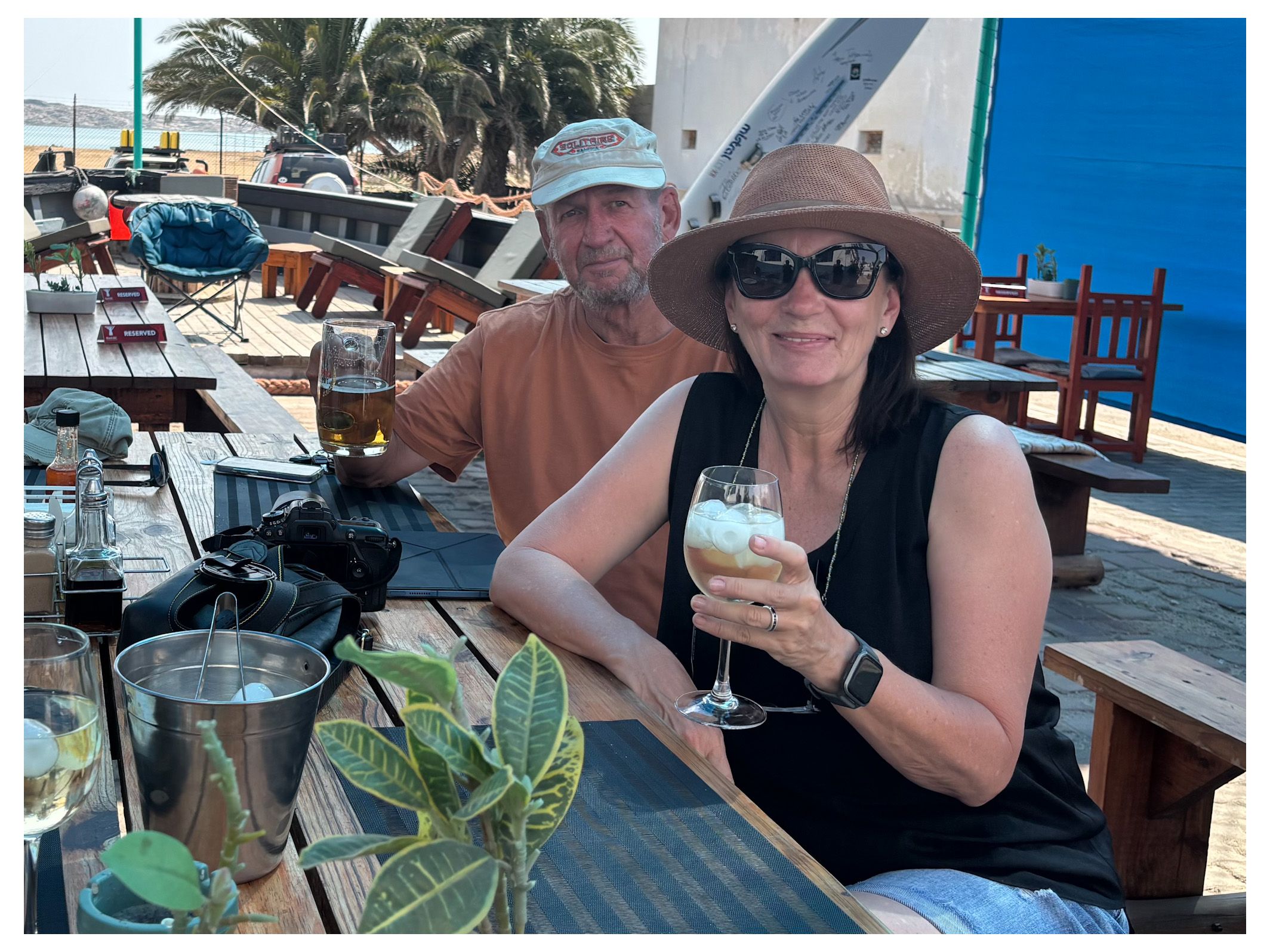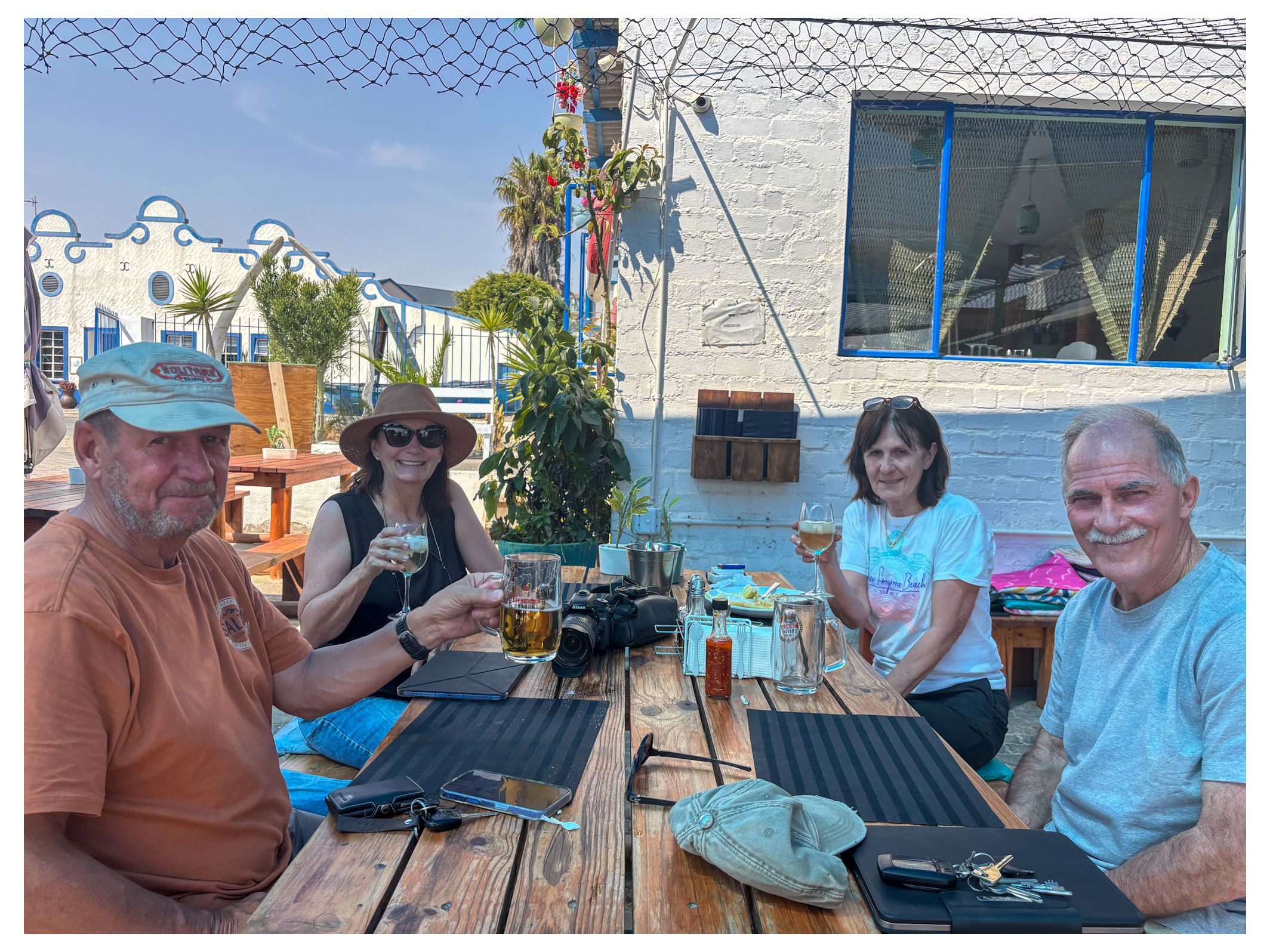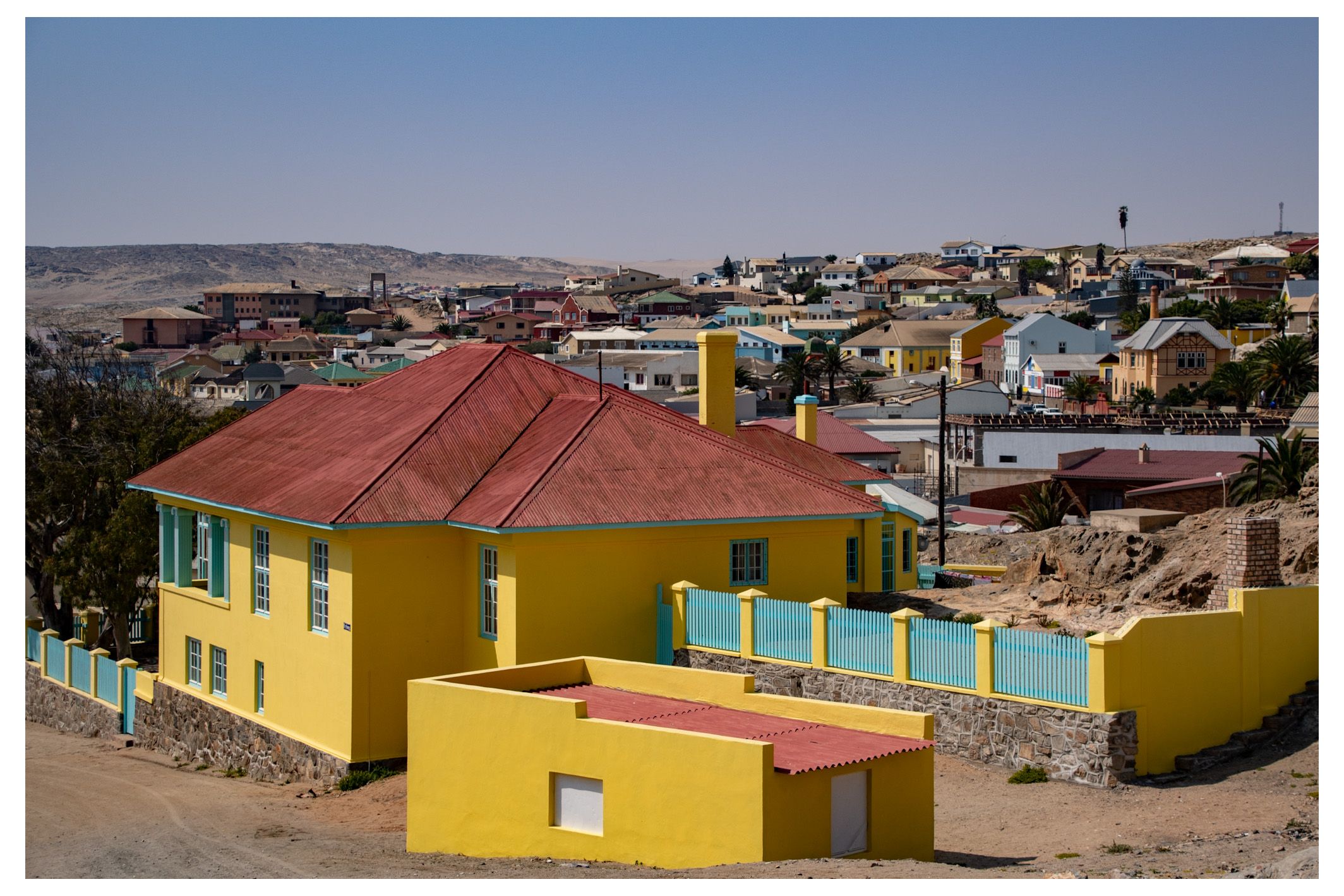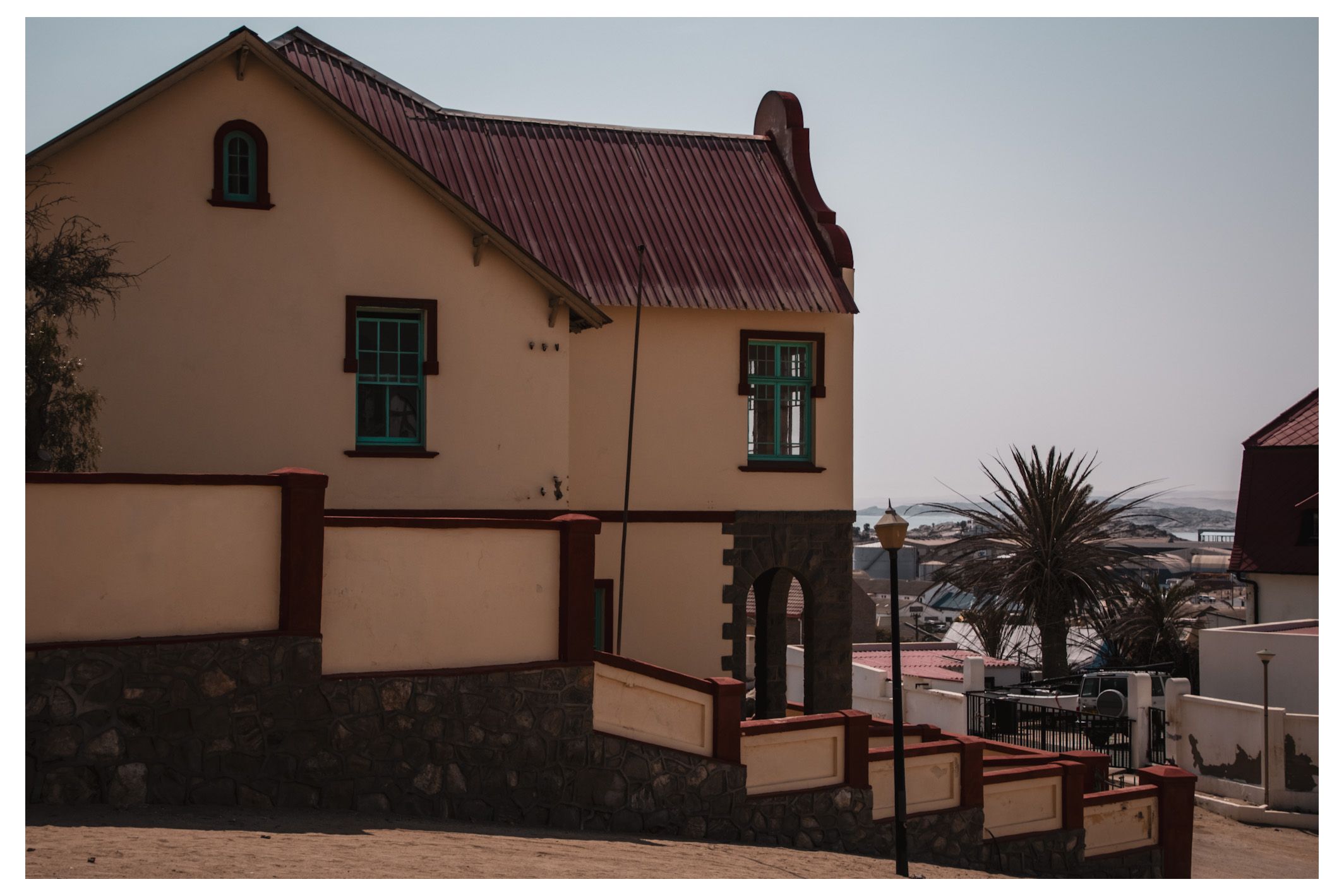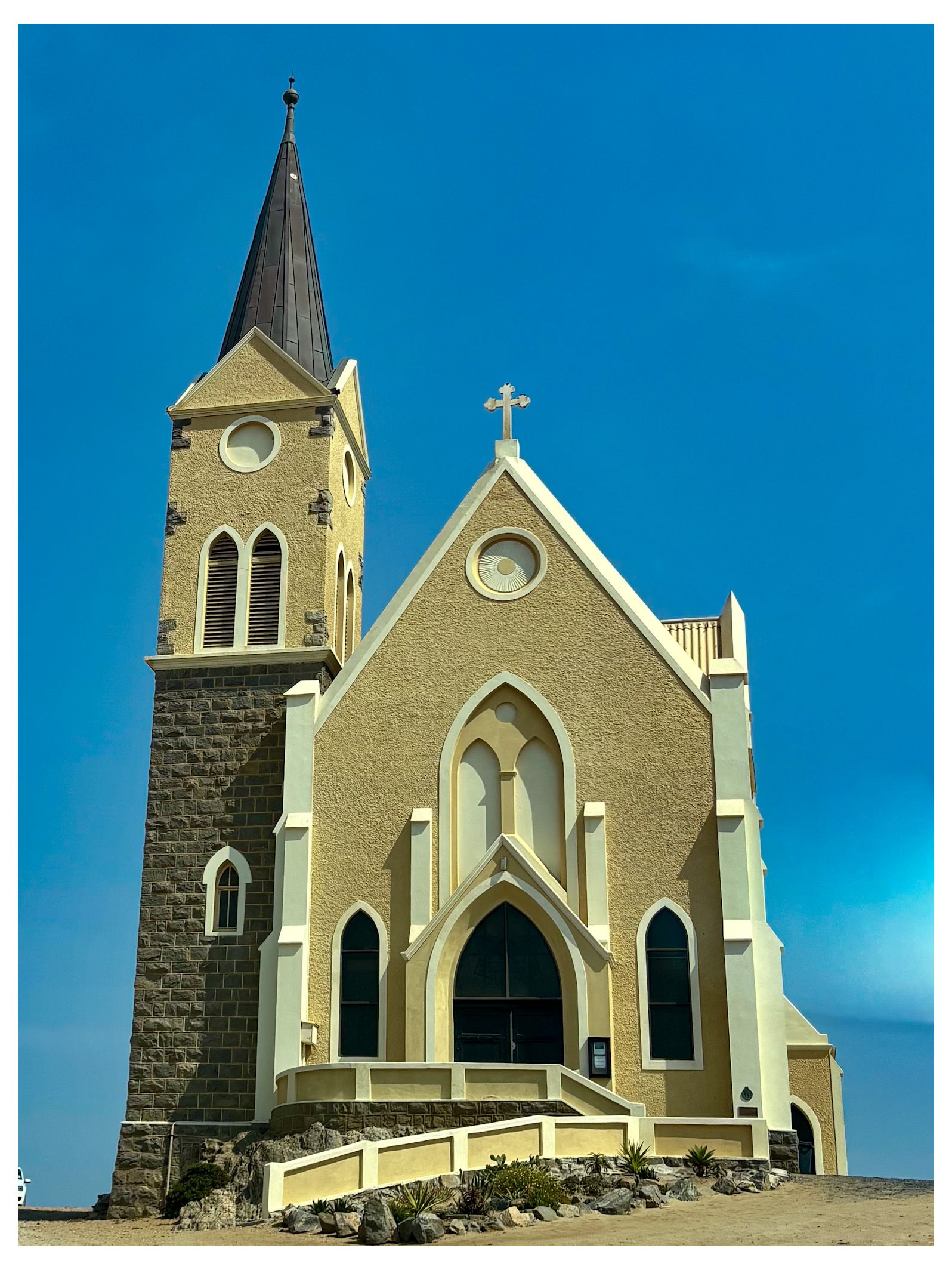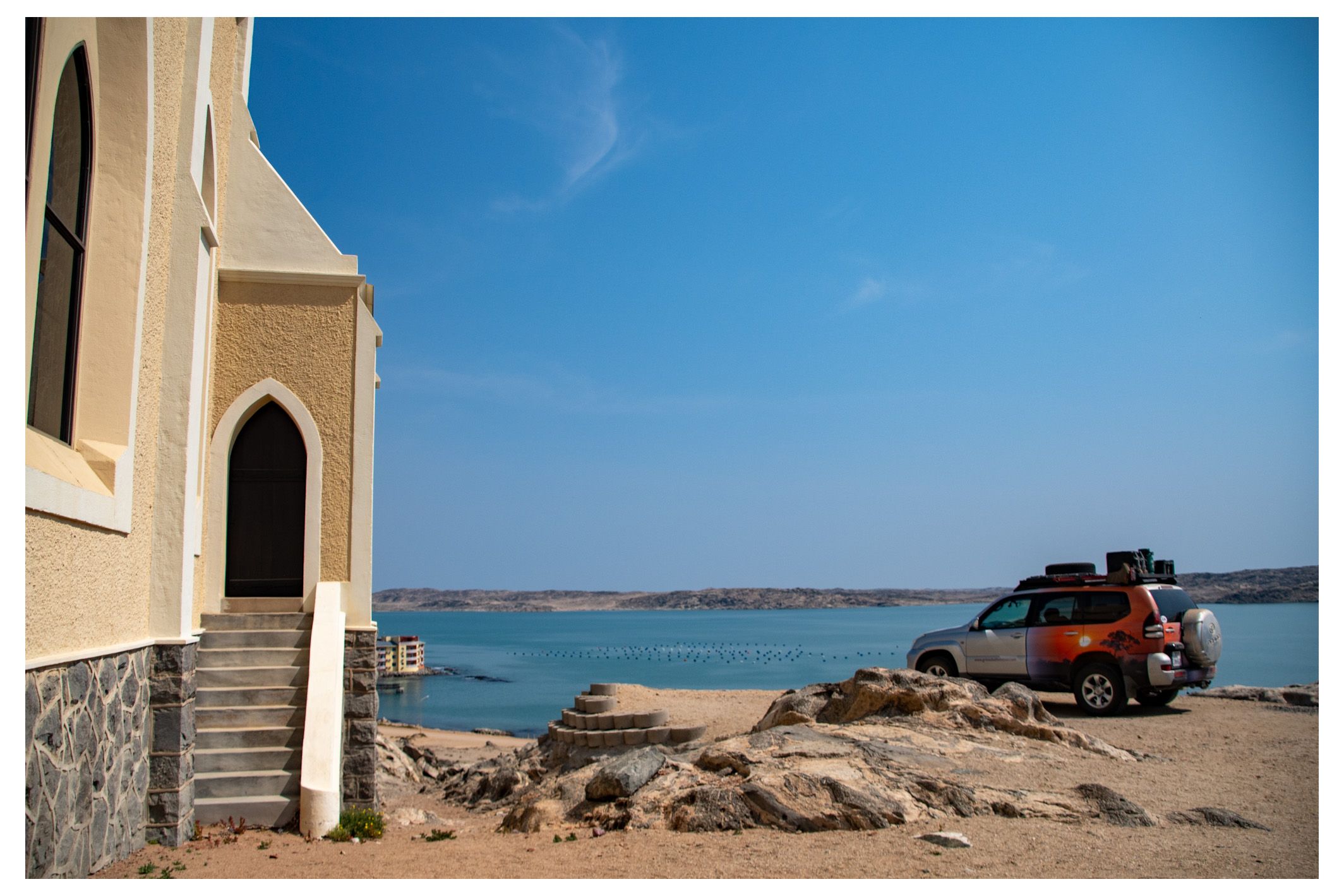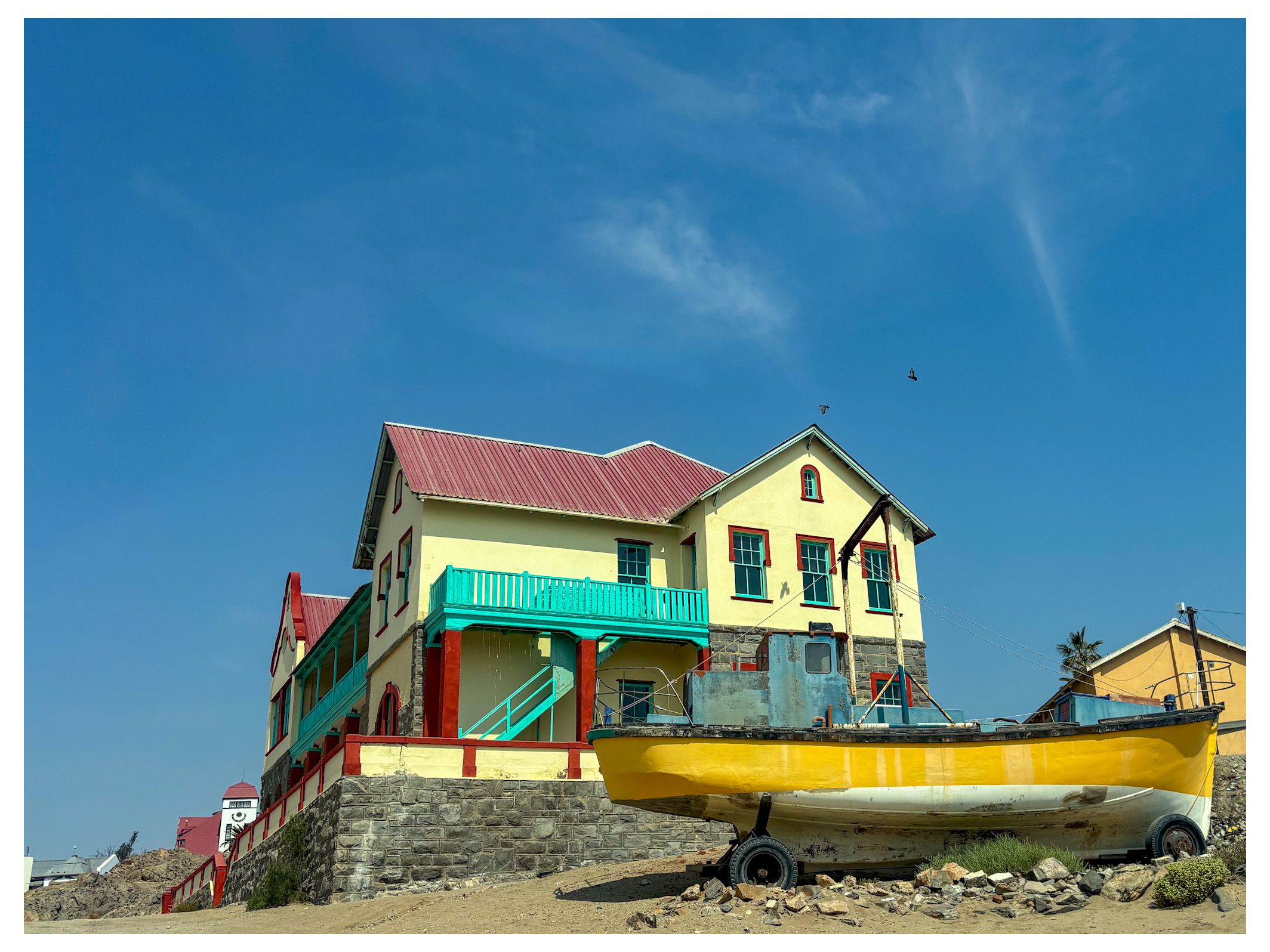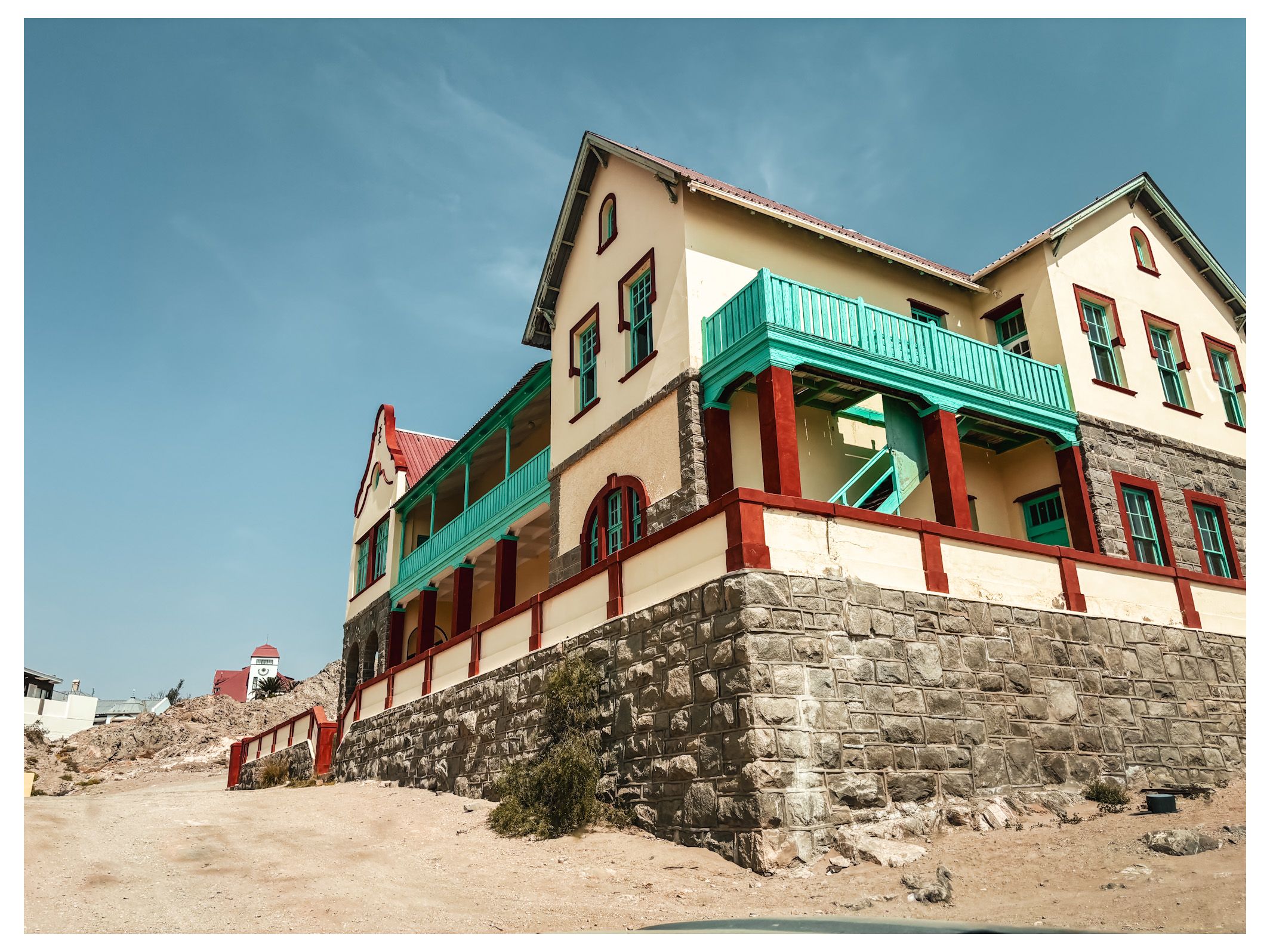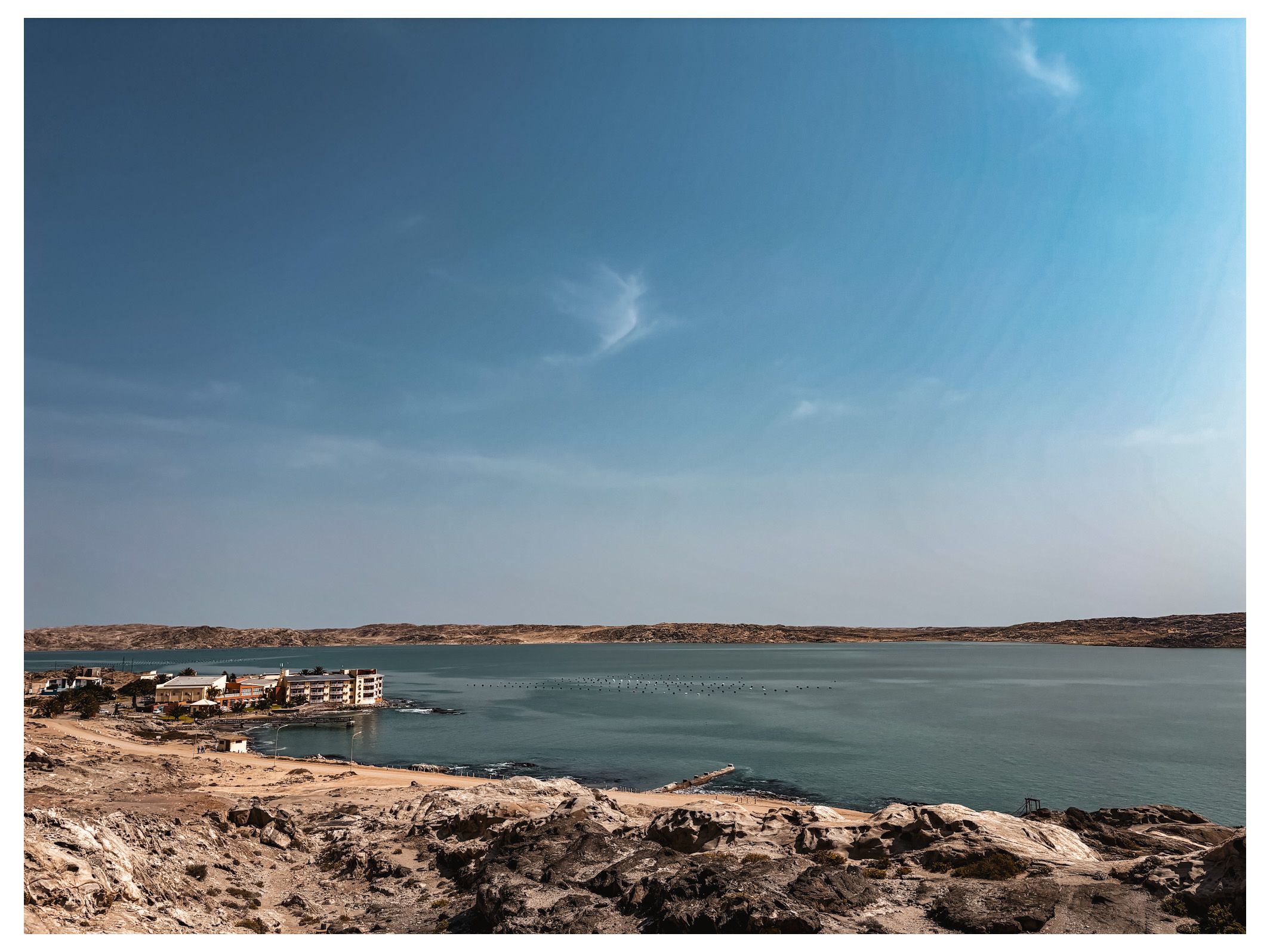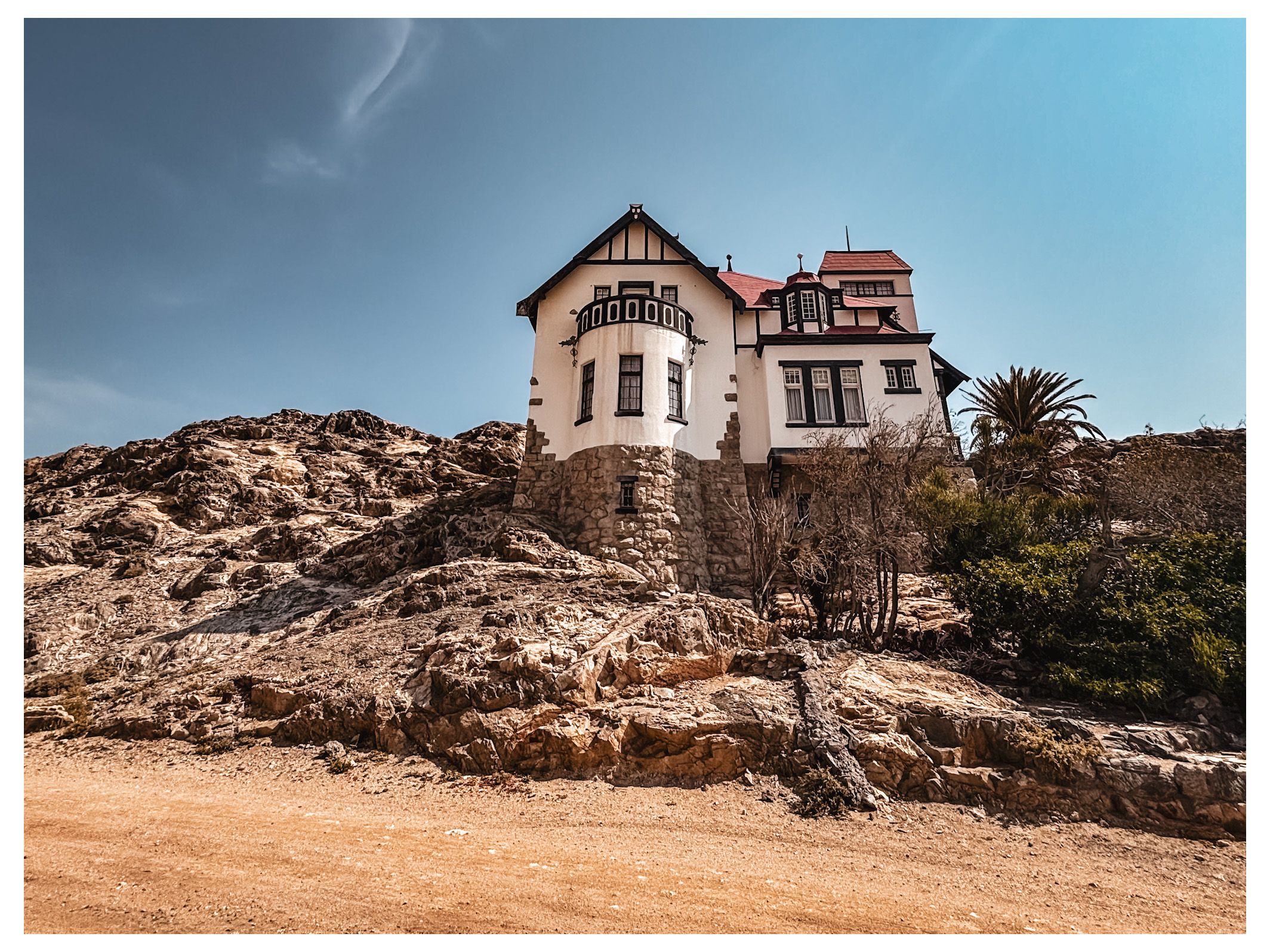Aus & Lüderitz, Namibia
Leaving the tranquil Quiver Tree Forest Campsite near Keetmanshoop, with its striking silhouettes of ancient quiver trees against the Namibian sky, we had eagerly planned to spend the night at the iconic Shark Island in Lüderitz Bay. To our disappointment, we discovered upon arrival that the historic site was closed for maintenance, forcing us to quickly rethink our plans. Undeterred, we drove to the small desert town of Aus, where we enjoyed a hearty lunch at the charming Bahnhof Hotel, known for its warm hospitality and rustic ambiance. There, we arranged to stay at the Aus Haven Stopover Campsite, conveniently located behind the fuel station in Aus.
The campsite was clean and comfortable, offering a quiet retreat after a long day of travel. However, its high walls blocked any scenic views of the surrounding desert, which was a slight letdown for those of us hoping to soak in Namibia’s vast landscapes. The ablution facilities were modern and well-maintained, ensuring we had everything we needed for a pleasant stay. We settled in, grateful for the unexpected haven, and prepared for the next day’s adventure.
The following morning, we set out on a 120-km day trip to Lüderitz, a coastal town steeped in history. En route, we made a memorable stop to observe the famed desert horses, a captivating sight in the barren landscape. These resilient creatures, believed to be the last feral horses in Africa, are said to have been released by a wealthy German farmer who left for the First World War and never returned. Watching them gallop freely across the dunes was a poignant reminder of nature’s ability to endure in the harshest conditions.
Our next stop was Kolmanskop, the eerie desert mining town slowly being swallowed by encroaching sands. The guided tour was both fascinating and haunting, showcasing grand old buildings now filled with drifts of sand. However, it was deeply disheartening to see the damage caused by thoughtless vandals who have defaced the structures with graffiti and reckless destruction. This once-thriving relic of Namibia’s diamond boom is at risk of losing its charm if such behavior continues unchecked.
Arriving in Lüderitz, we savored a seafood lunch at the Portuguese Fisherman, a cozy restaurant with views of the harbor. The hake and chips, priced at N$185.00, were fresh and flavorful, though we felt the cost was a bit steep for such a simple dish. Afterward, we strolled through Lüderitz’s colorful streets, marveling at its well-preserved colonial architecture, including the striking Goerke Haus and the Felsenkirche church perched on a rocky outcrop. The town’s blend of German heritage and coastal charm was enchanting.
However, our pleasant exploration took a sour turn when we visited a local shop. We were repeatedly harassed by street beggars and individuals who appeared to be struggling with drug addiction. Their persistence was unsettling, casting a shadow over our visit. Frustrated, we decided to cut our time in Lüderitz short and return to Aus. It’s a shame that such issues mar an otherwise delightful destination. If Lüderitz’s authorities do not address the problem of street harassment, the town risks fading into obscurity, much like Kolmanskop, abandoned to the whims of time and neglect.
